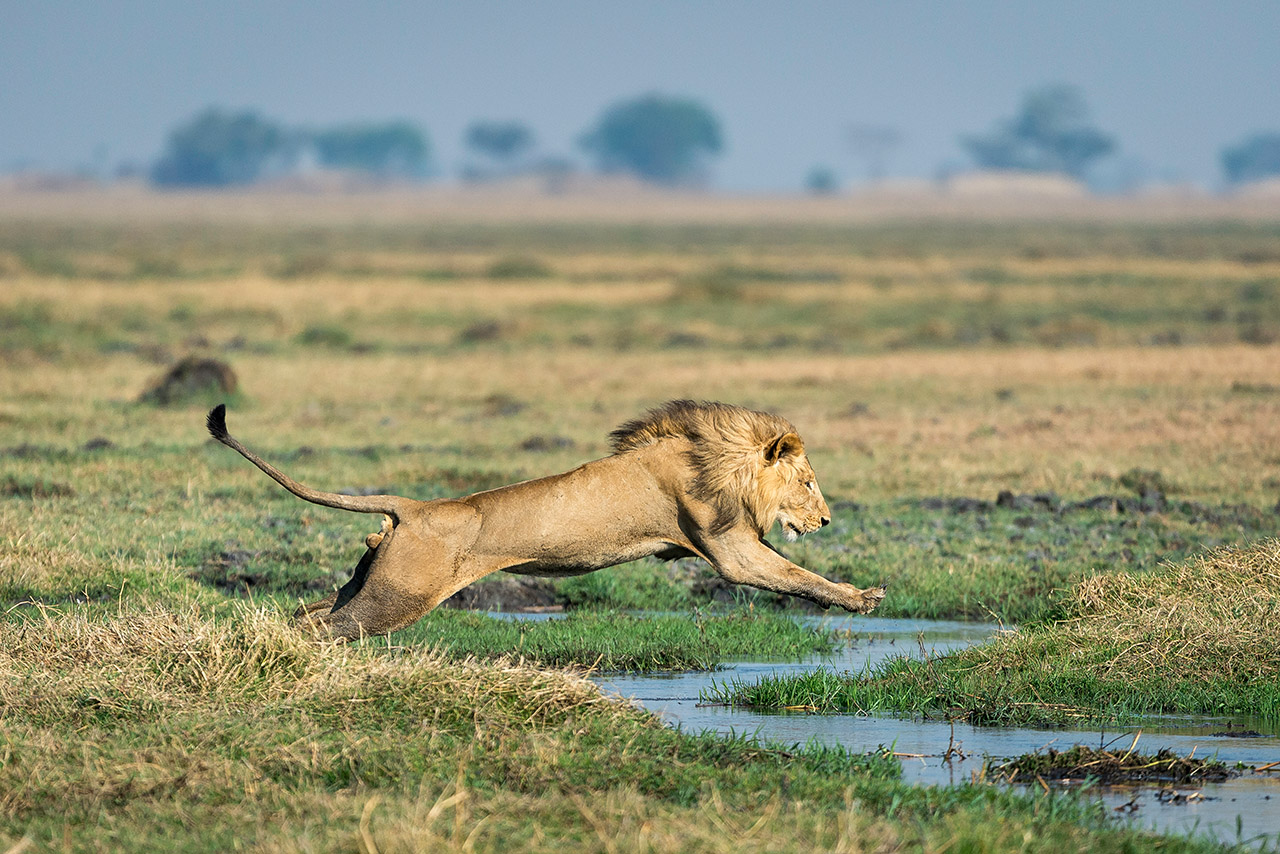

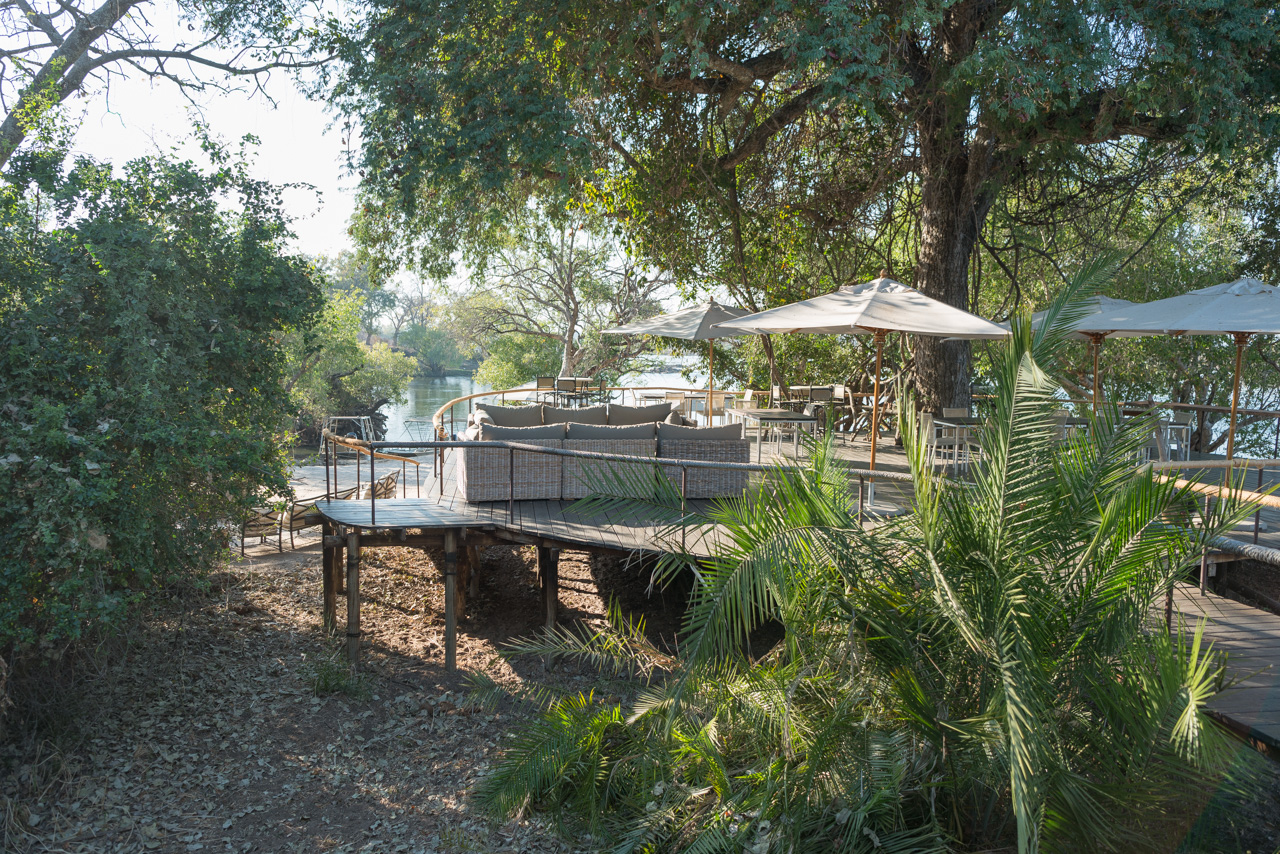
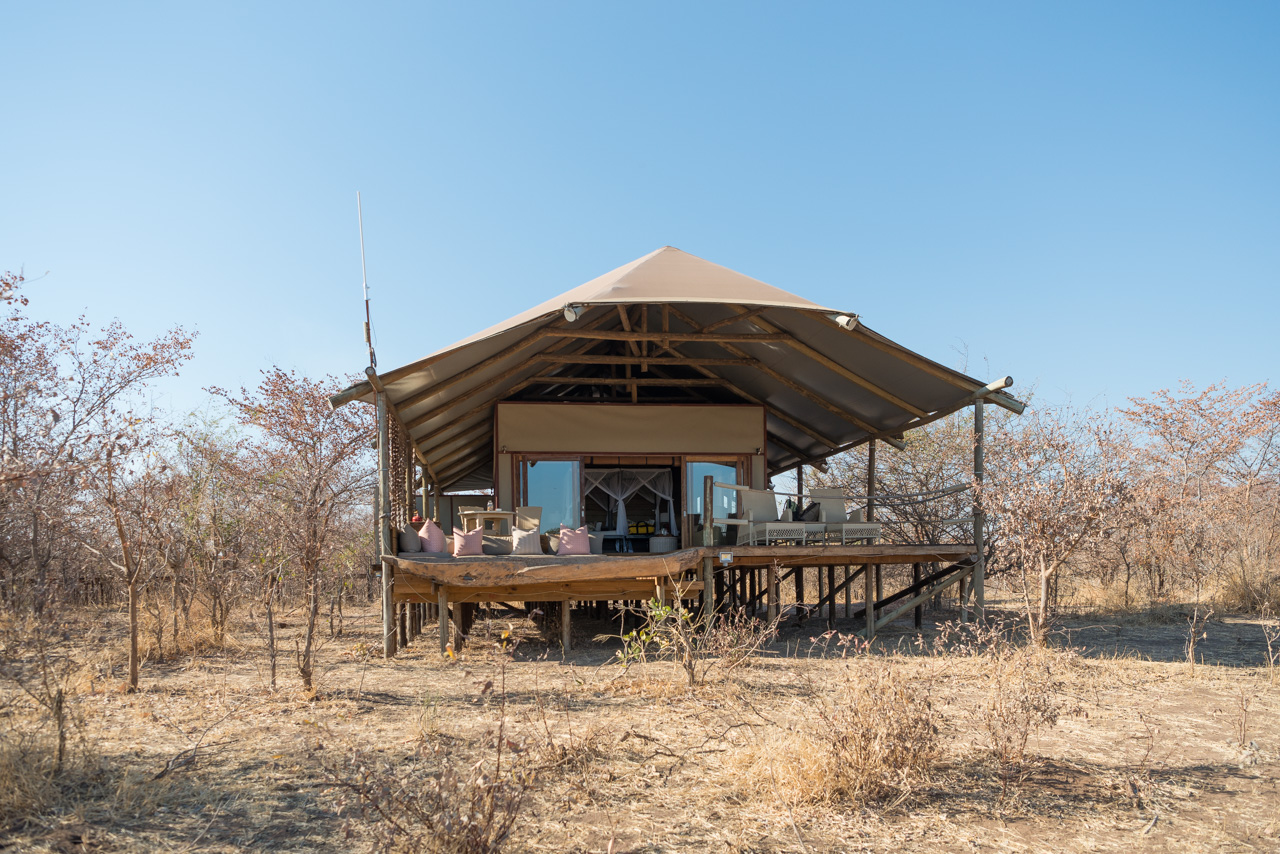

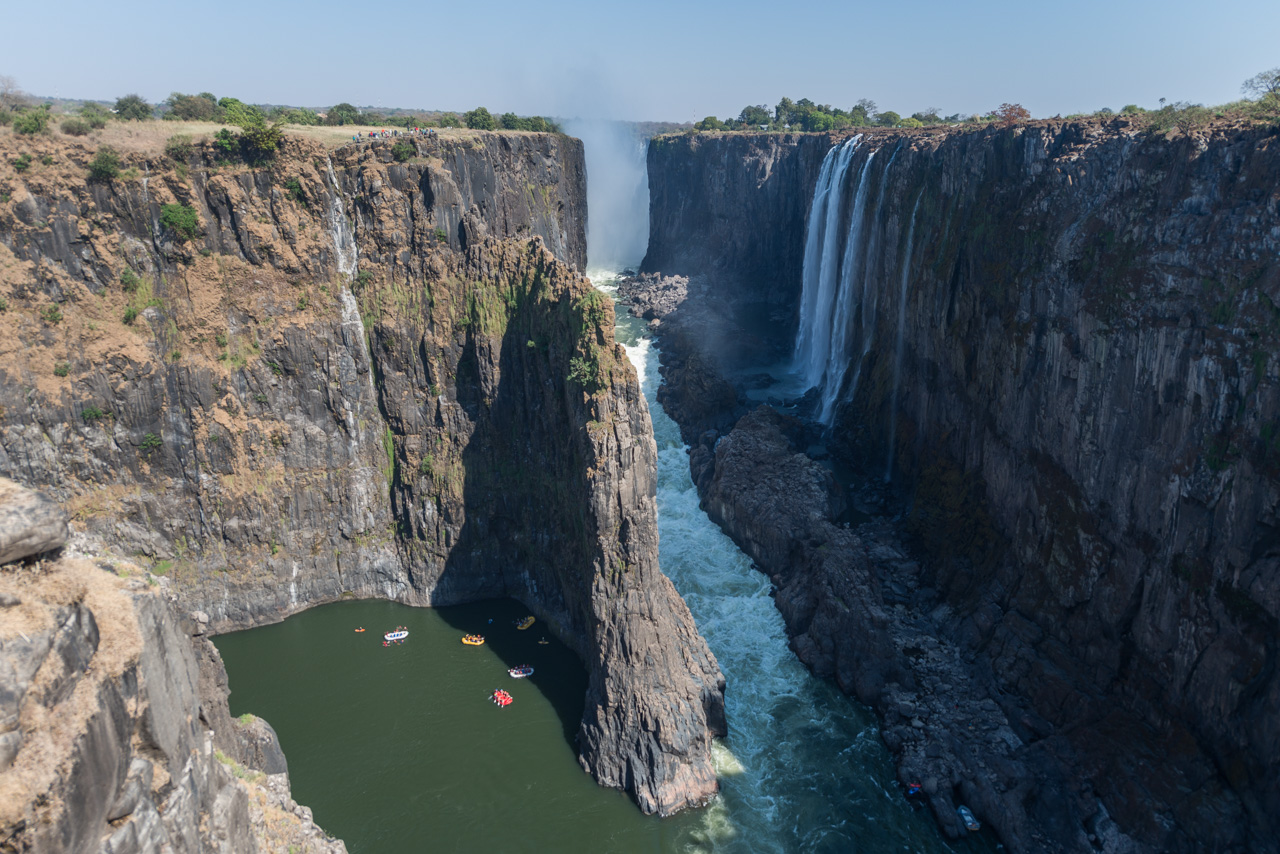
Accommodation Twelve luxury safari tents with en-suite bathroom are scattered along the banks of the Zambezi River. The rooms are connected by walkways to the main building. The meals are served on the sundeck by the pool or in the restaurant. From everywhere, great views of the Zambezi River can be enjoyed.
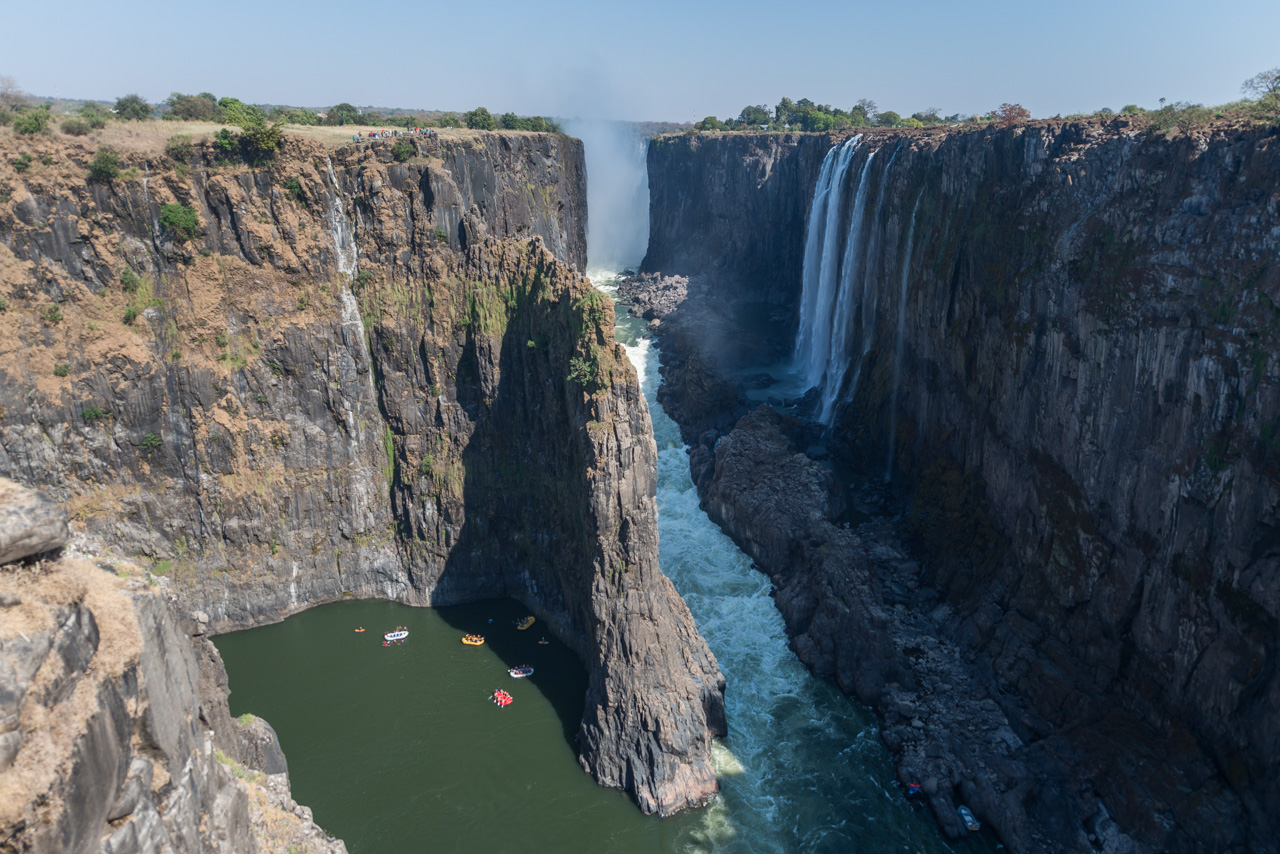
The Zambezi River originates in the northwest of Zambia and flows 2700 km to the Pacific Ocean. It also flows past Livingstone before tumbling 100 m into the Batoka Gorge, which marks the border between Zambia and Zimbabwe.
The falls are known as ‘Mosi-oa-Tunya’ or ‘The Smoke that Thunders’ because the mist can rise several hundred metres above the gorge during the wet season, making it visible for miles around and therefore a well-known landmark.
If you prefer less action, then we recommend the really good camps Toka Leya, River Club and Tongabezi, which are all located some 30 minutes upstream, close to Mosi-oa-Tunya National Park. There is no helicopter noise here and the camps offer guides, who can organise everything on site and accompany you on your chosen activities.
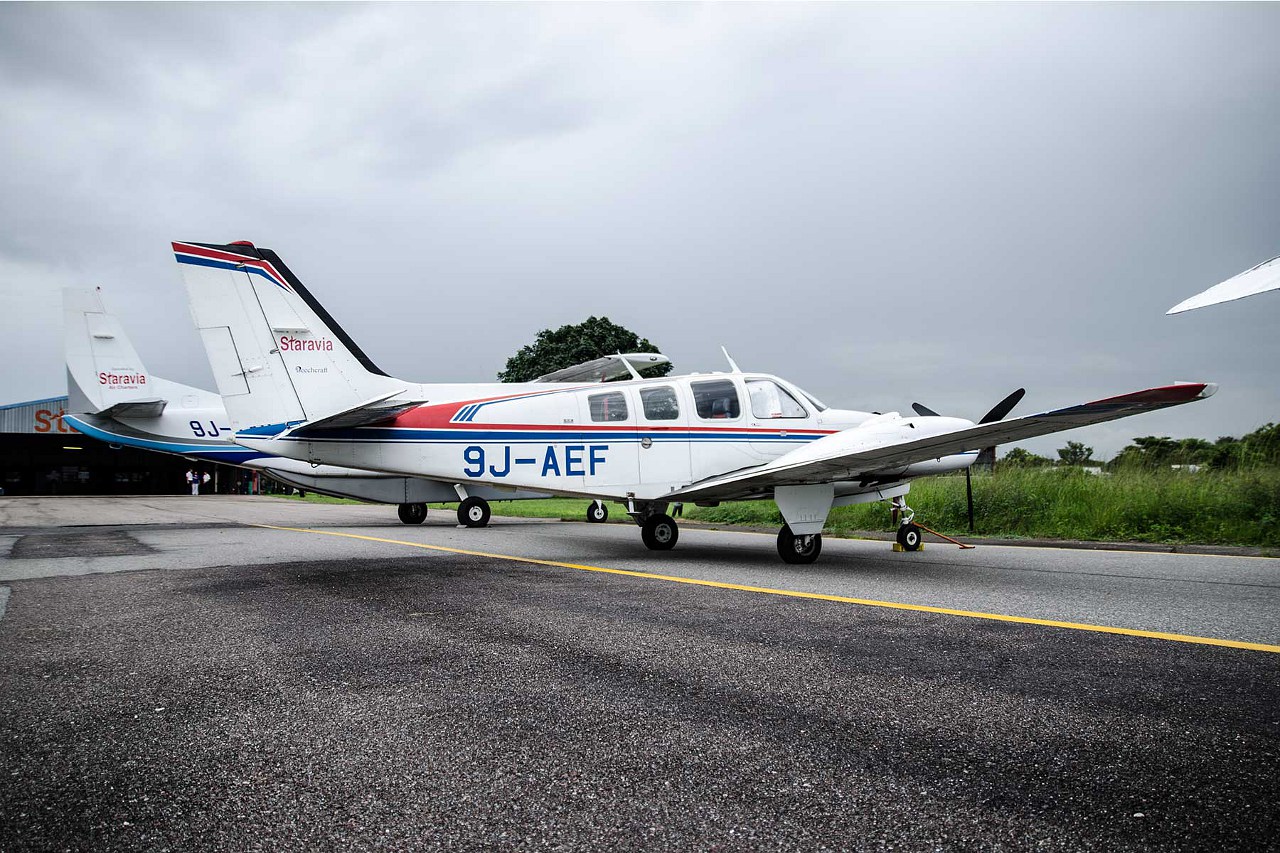

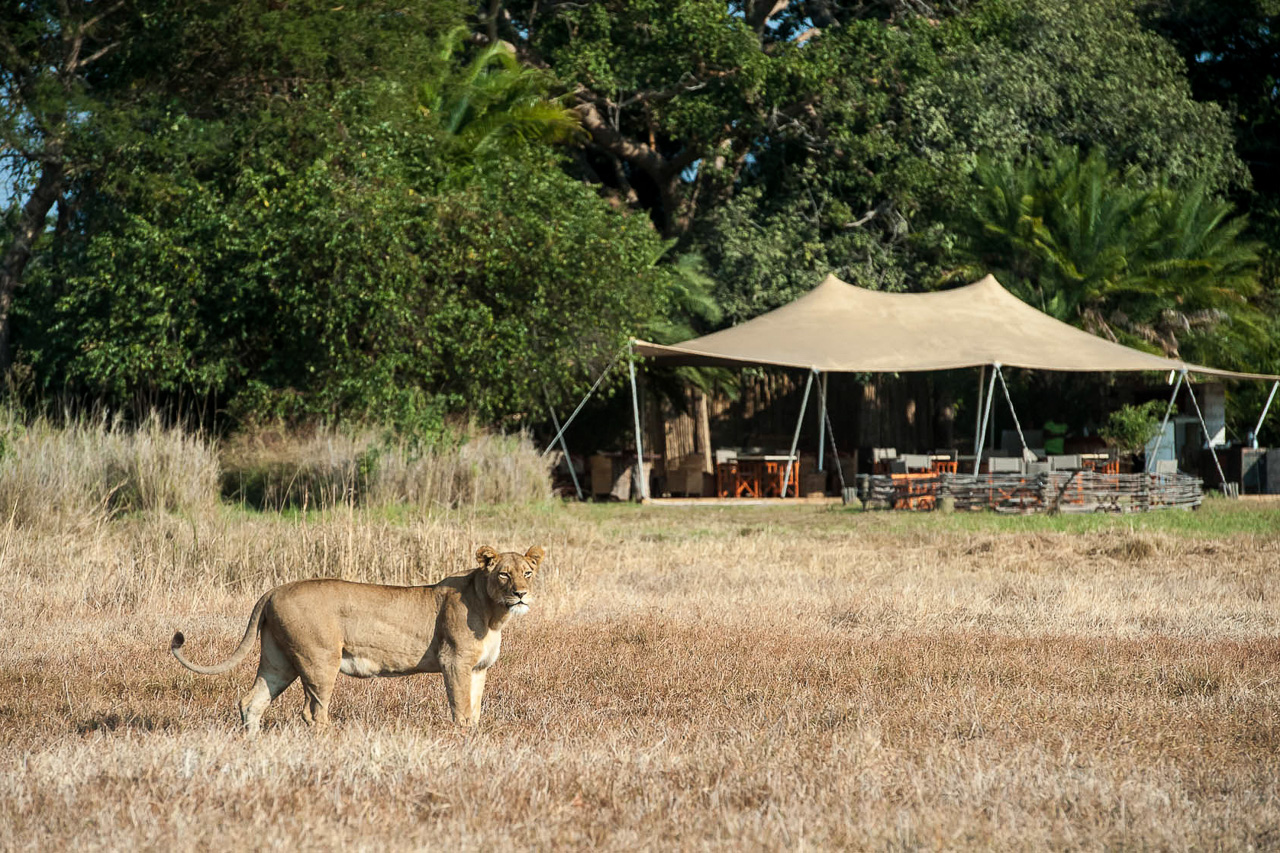
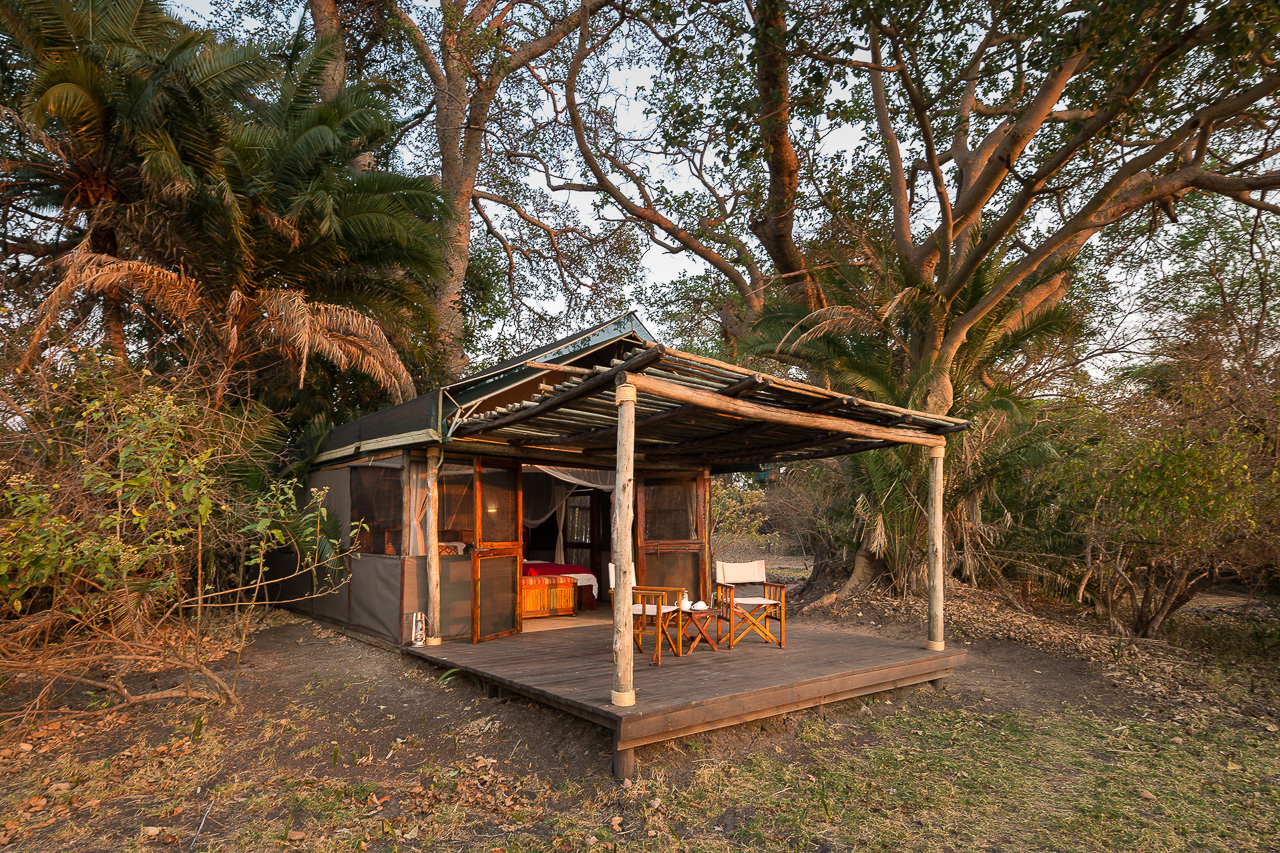
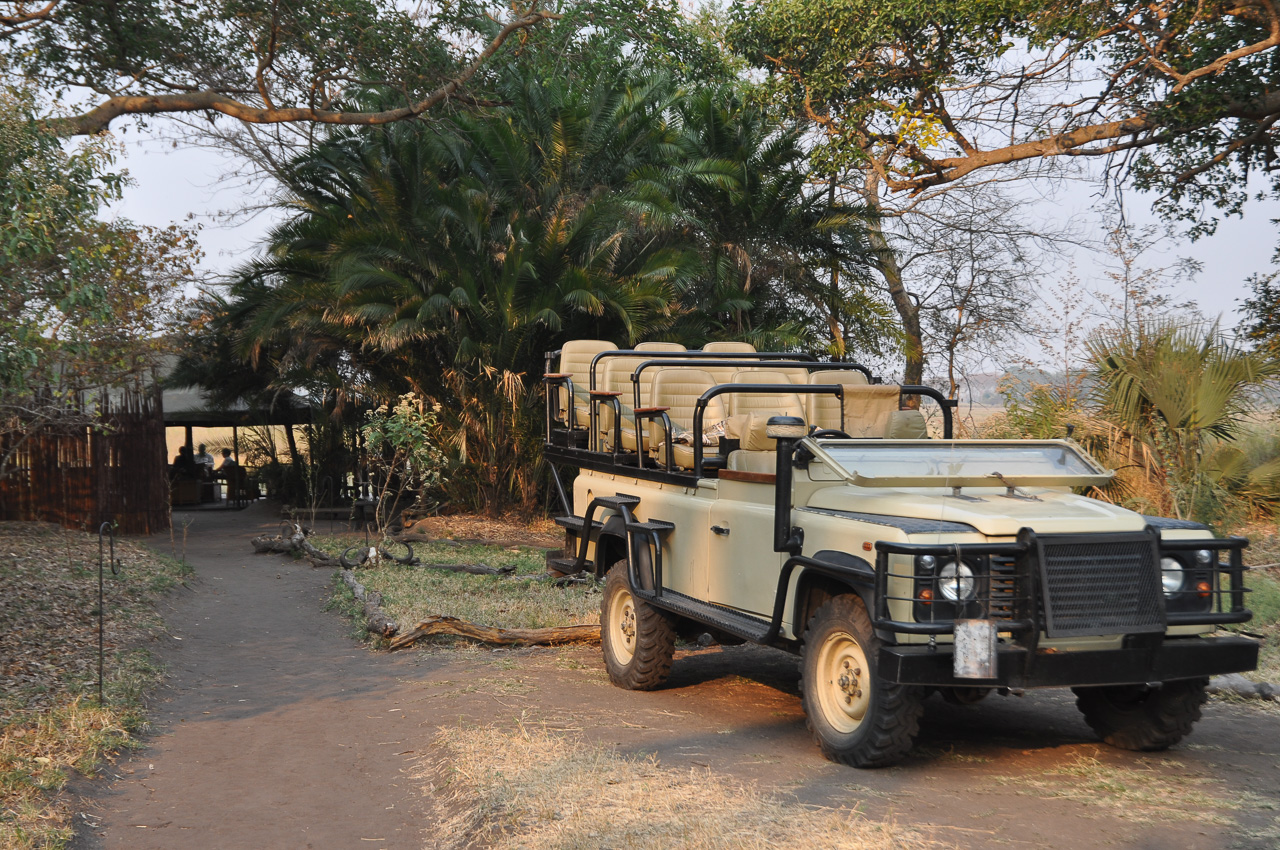
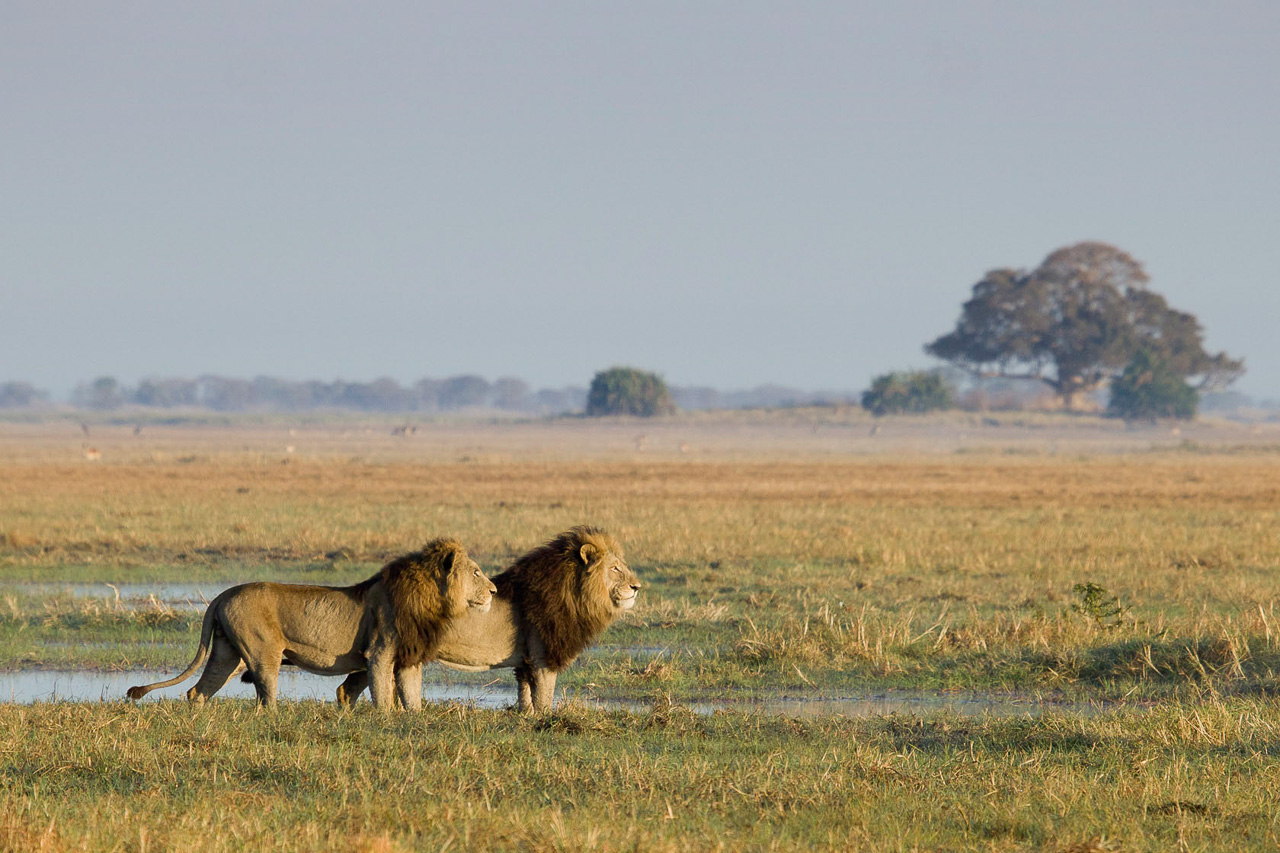
Accommodation
Busanga Bush Camp is a small, intimate camp with four double en-suite rooms positioned in pairs either side of the main building. The tents and main building are constructed at ground level offering guests a genuine bush experience. Those in need of a little more comfort can stay at Shumba Camp, which is located just 15 minutes away.
A fire pit is situated close to the main building, ideal for those cooler evenings, and a boma lit by paraffin lamps provides the setting for evening meals. Located just around the corner is the lookout point, which offers guests superb views of the plain to the front of the camp. Lions seem to love this place and visitors are well advised to take a quick look around before leaving their tents!
Kafue National Park covers an area of 22’400 km² which makes it one of the largest parks in Africa. The northern part of the park is home to the spectacular Busanga Plains, which flood during the wet season and gradually dry up again as October approaches. As the dry season progresses and the surrounding water holes dry up, more and more wildlife find their way onto the plains. Most camps open in May/June and close again in November when the rains arrive.
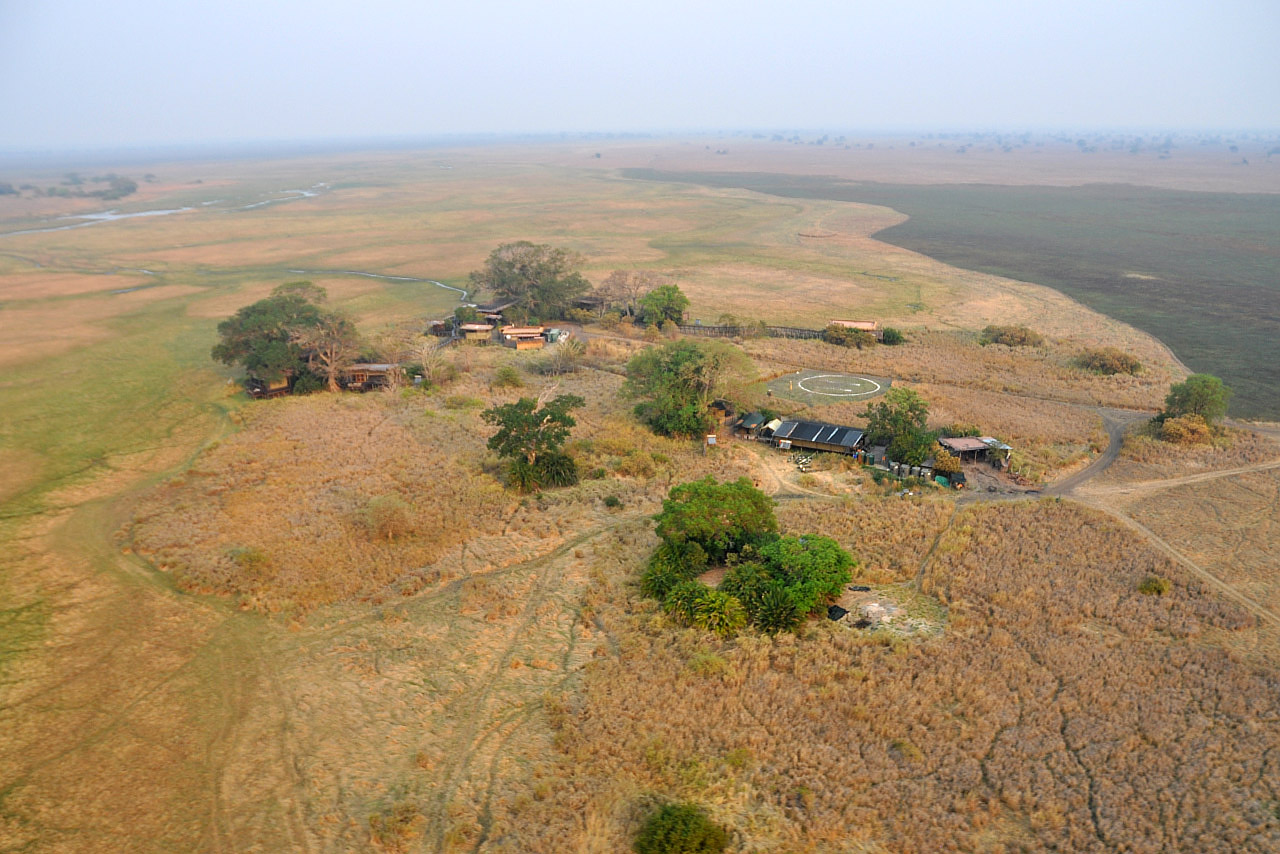
Kafue National Park sits at a height of 1350 m above sea level and covers 22’400 km². The three rivers Lufupa, Lunga and Kafue all carve their way through the park before being blocked by the Itezhi Tezhi Dam in its southern part.
The northern part of the park is home to the spectacular Busanga Plains, which flood during the wet season and gradually dry up again as October approaches. Flooding reaches its peak in March/April. Most camps open in May/June and close again in November when the rains arrive.
Busanga Plains supports a broad spectrum of wildlife, but not in large numbers. Nevertheless, it is definitely worth a visit, as there are not many places where you get to see wattled crane, crowned crane, sitatunga, puku, red lechwe, wildebeest, sable and roan antelope, leopard and lion all in one day.
The park also supports cheetah and wild dog. Elephant wander across the plains, but again not in large numbers. The Busanga Plains become a paradise for bird lovers from April to June: 491 species have been spotted here to date.
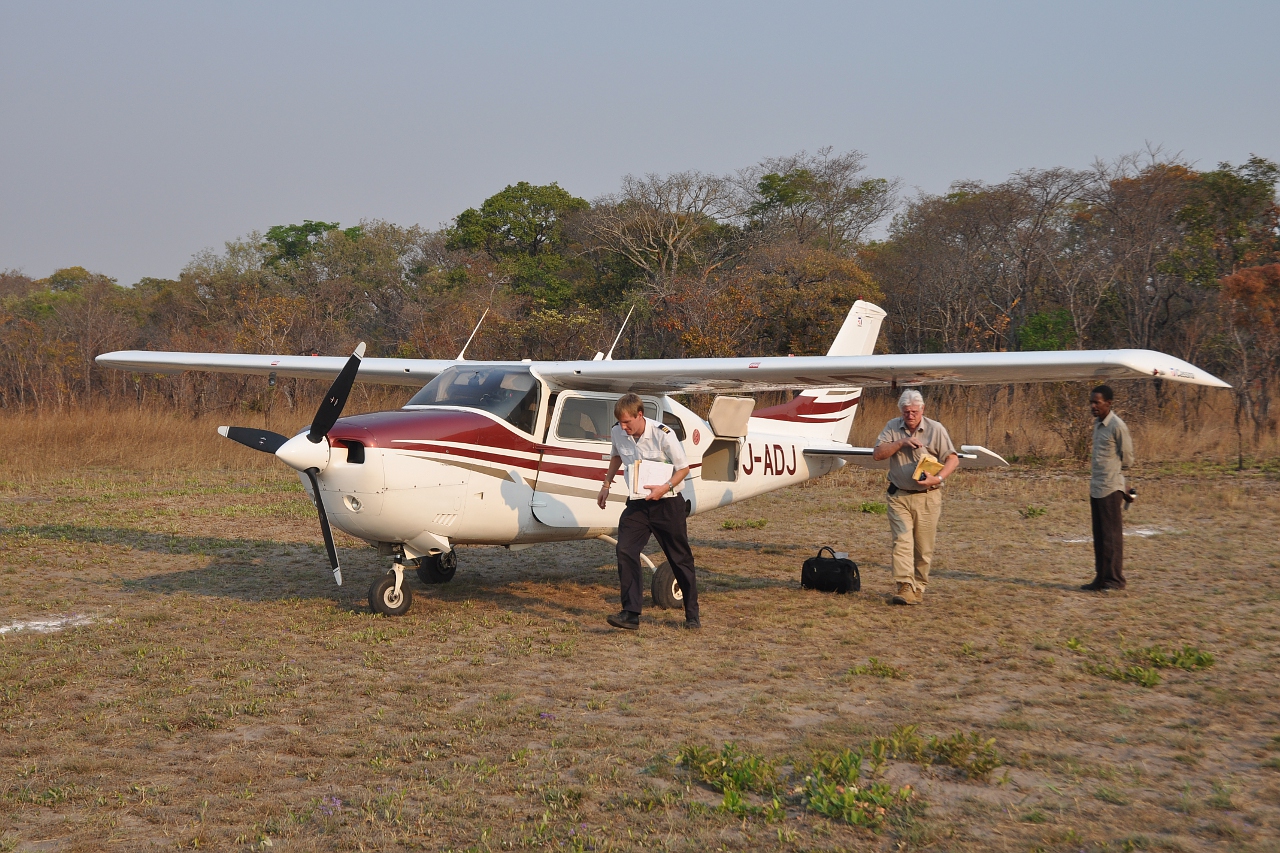
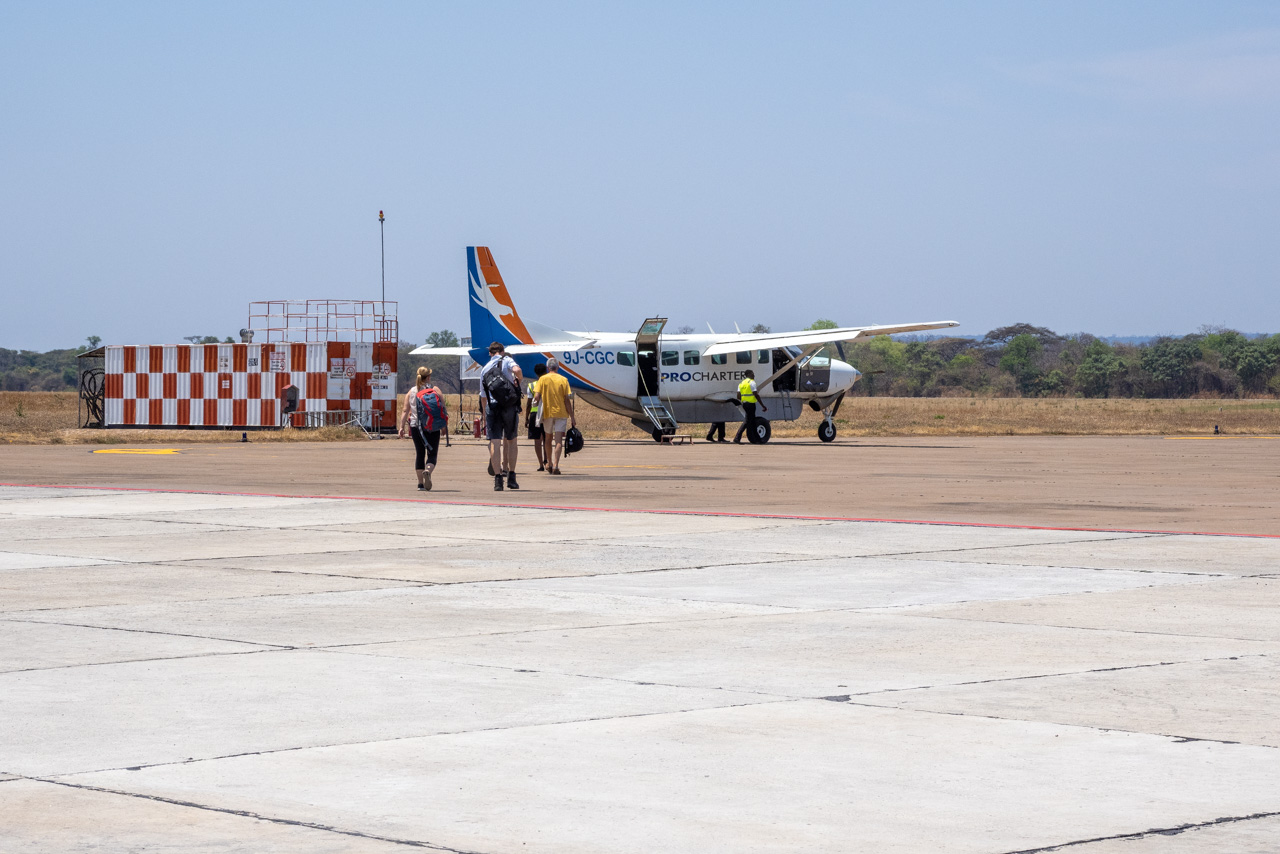

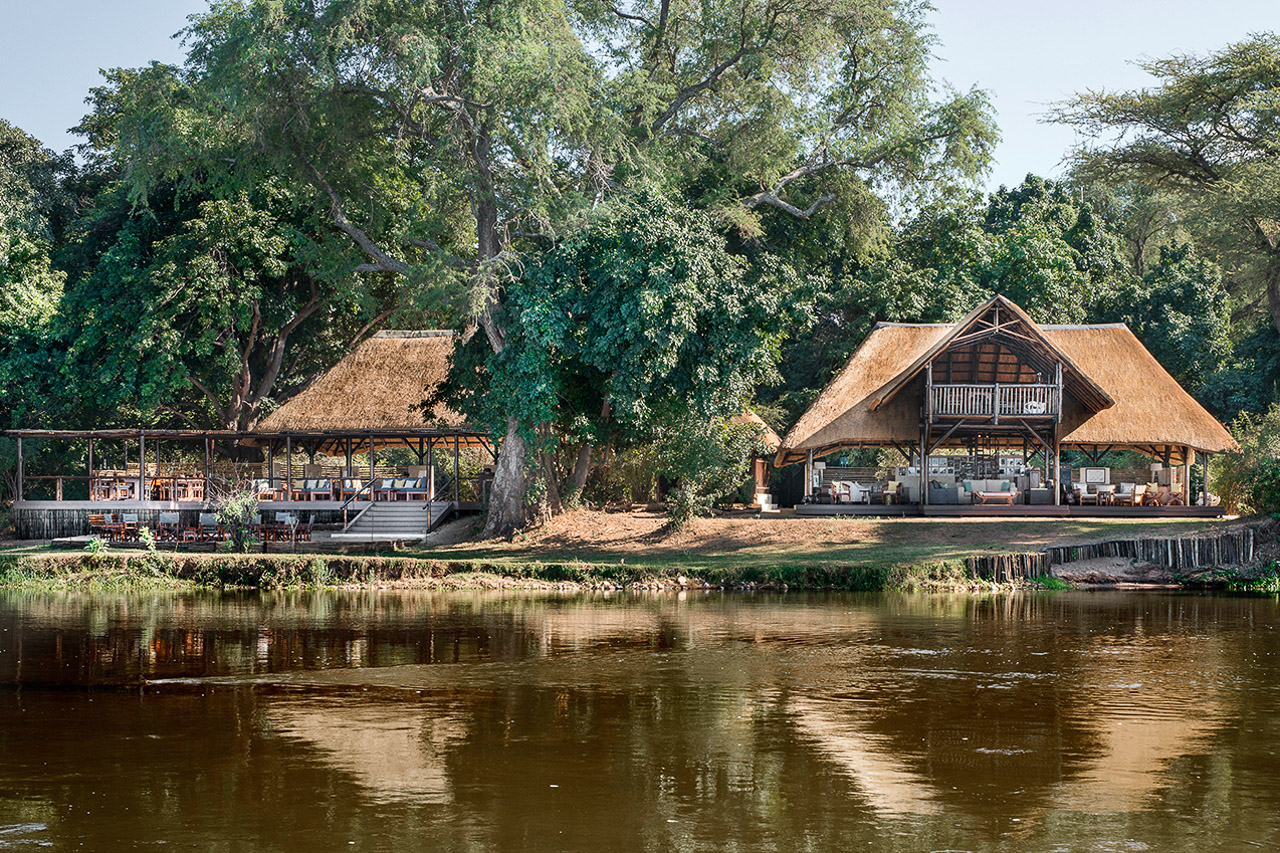

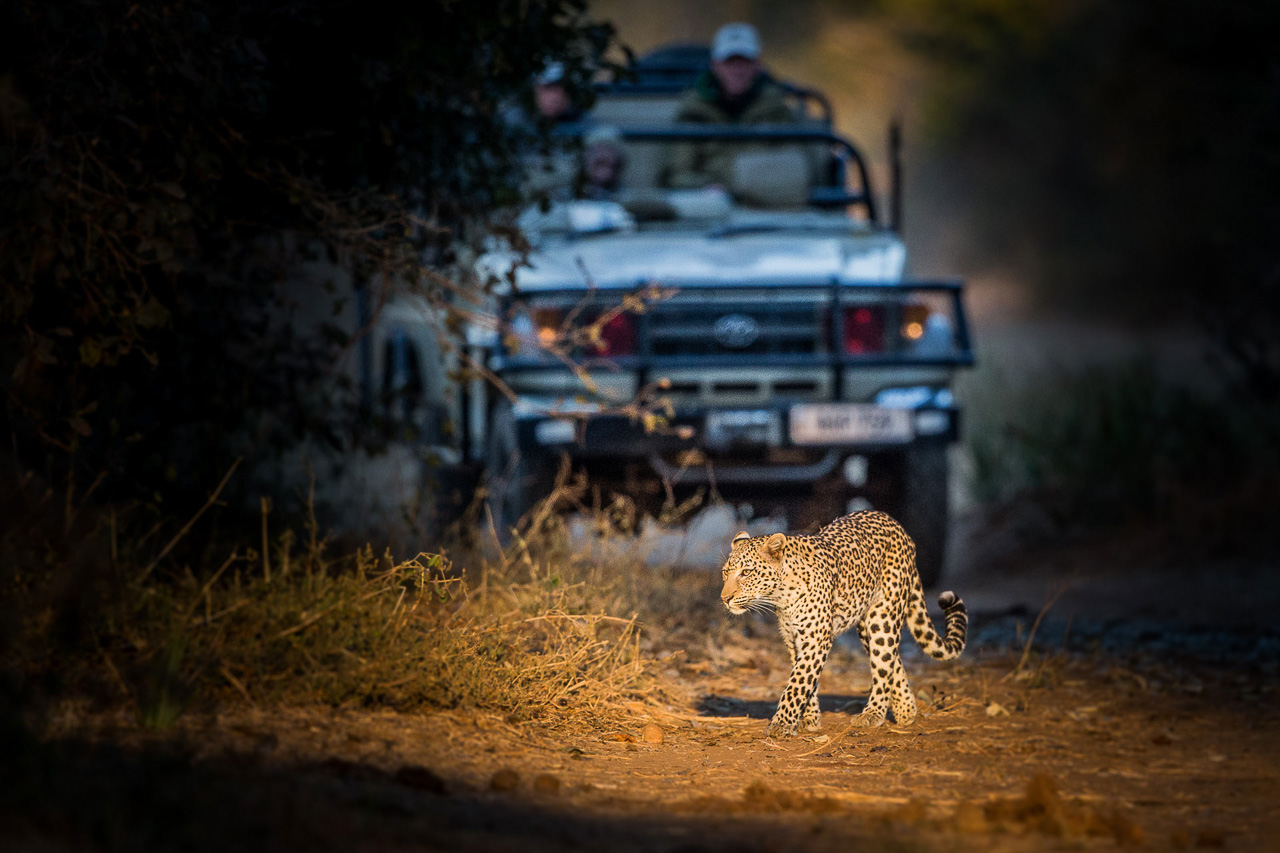
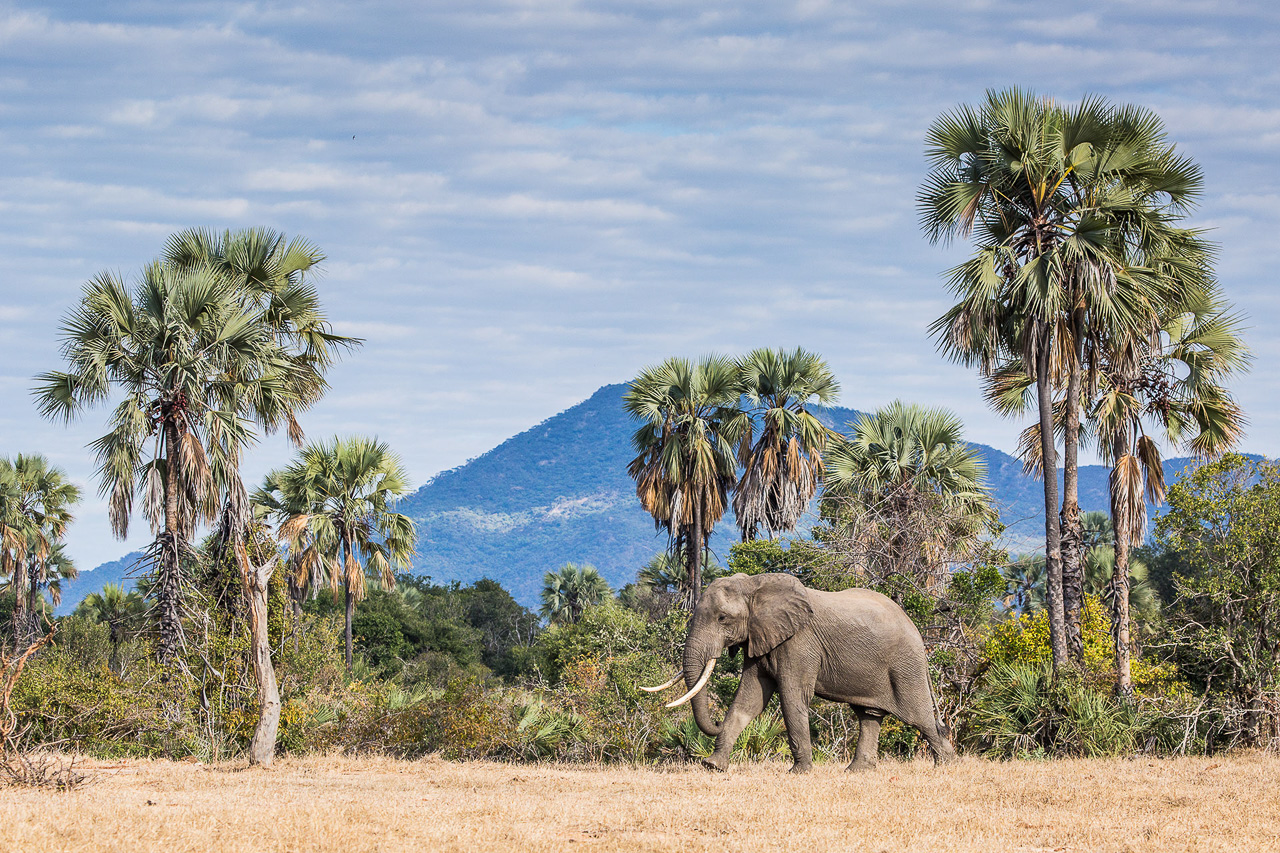
Accommodation
Built in 1989 by the Cumings family, Chiawa Camp was the first safari camp to be erected in Lower Zambezi National Park. The owner family has invested hugely in protecting wildlife and developing the park, and deserves every respect for their monumental effort. The camp has received numerous awards over the years for its excellent personal service, fantastic management and bespoke activities.
Chiawa offers eight tastefully designed en-suite rooms with views of the river. Nestled beneath shade-giving trees, each sits slightly elevated atop a wooden platform. The verandas invite guests to sit back and relax, disturbed only by the odd elephant strolling about to say hello. Room 9 (Safari Suite differs from the others in that it offers more comfort and space and is situated a little way off atop a hillock with spectacular wide-reaching views of a dry valley and the nearby Zambezi River.
The two-storey main building consists of a lounge with bar, dining area, curio shop, pool with open fitness area and fire pit where breakfast is served. At Chiawa Camp, guests are not allowed to walk alone from their room to the main building during the day, as numerous elephants often roam the camp. Guests arrange pick-ups by radio.
The camp is accessed by air from Lusaka to Jeki Airstrip in 40 minutes. A 50-minute boat transfer takes guests to the camp.
Chiawa's sister camp, Old Mondoro, is located further east.
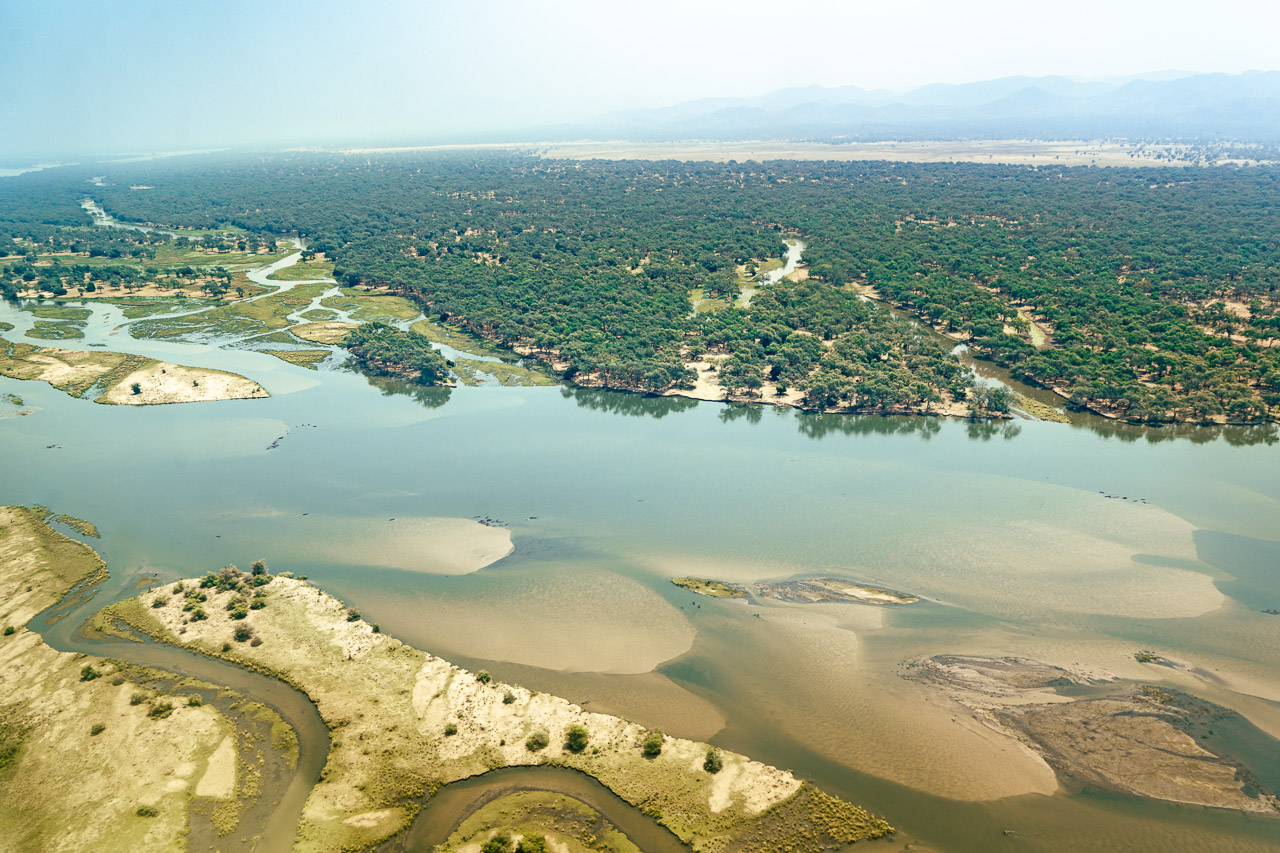
The camps are all located on the riverside, which pulls in large herds of elephant and buffalo. The best camps offer canoeing safaris on the Zambezi’s tributaries or trips on the Zambezi River in flat-bottomed boats. In addition to game drives, walking safaris are also usually on offer – there is something different to do here every day.
An abundance of elephant gathers in the Lower Zambezi region, and the pachyderms are permanent visitors to the camps, so keep your eyes peeled when walking back to your room.
It gets very hot and sultry in October, just before the wet season begins. If you keen on walking and suffer from the heat, please visit earlier in the season.

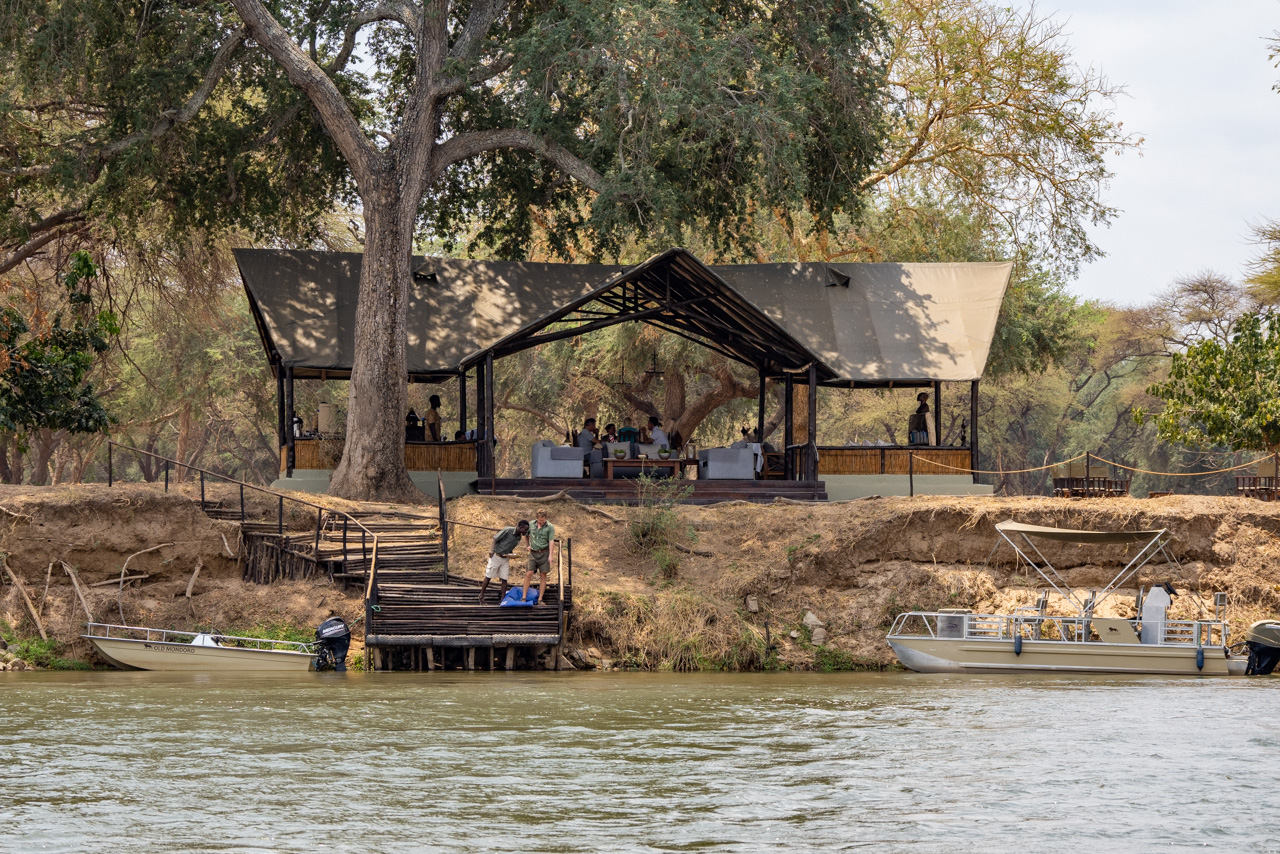
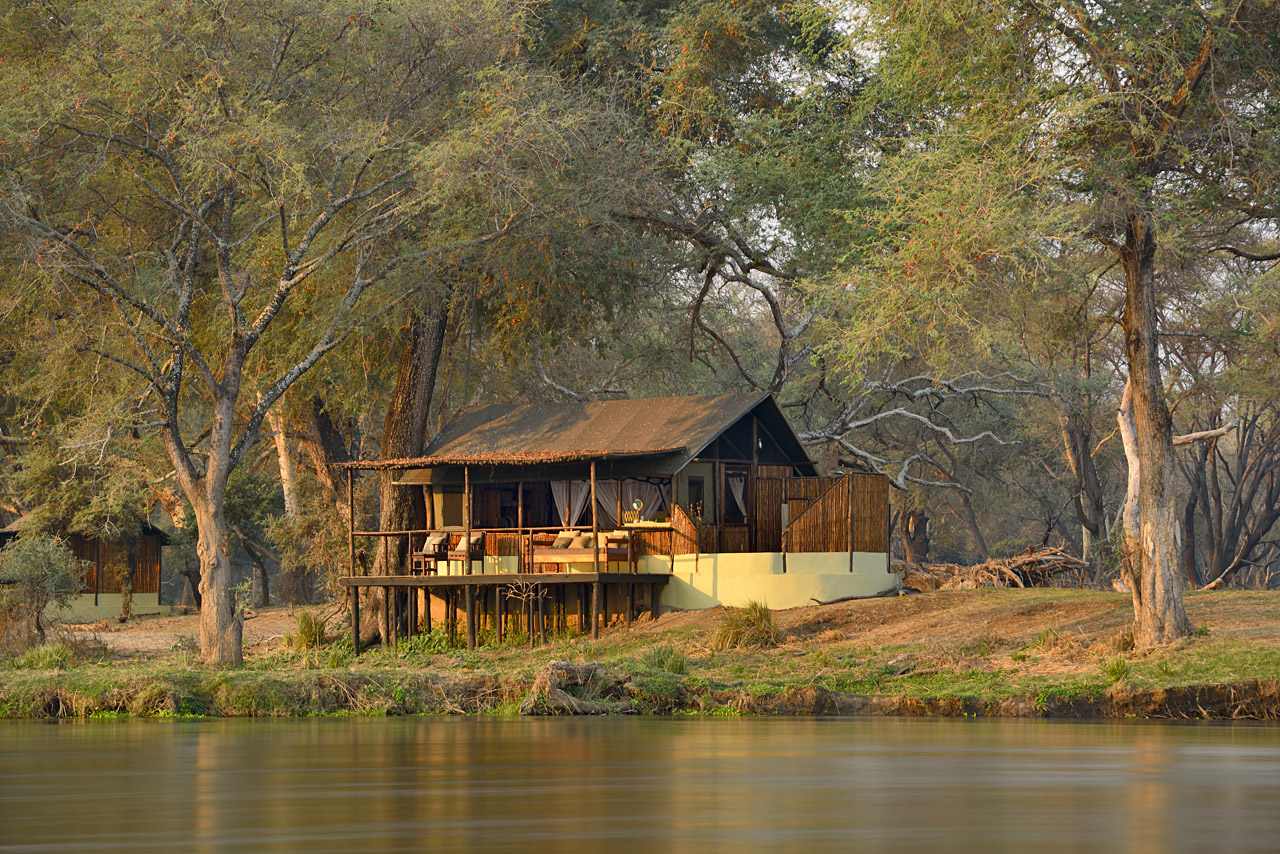
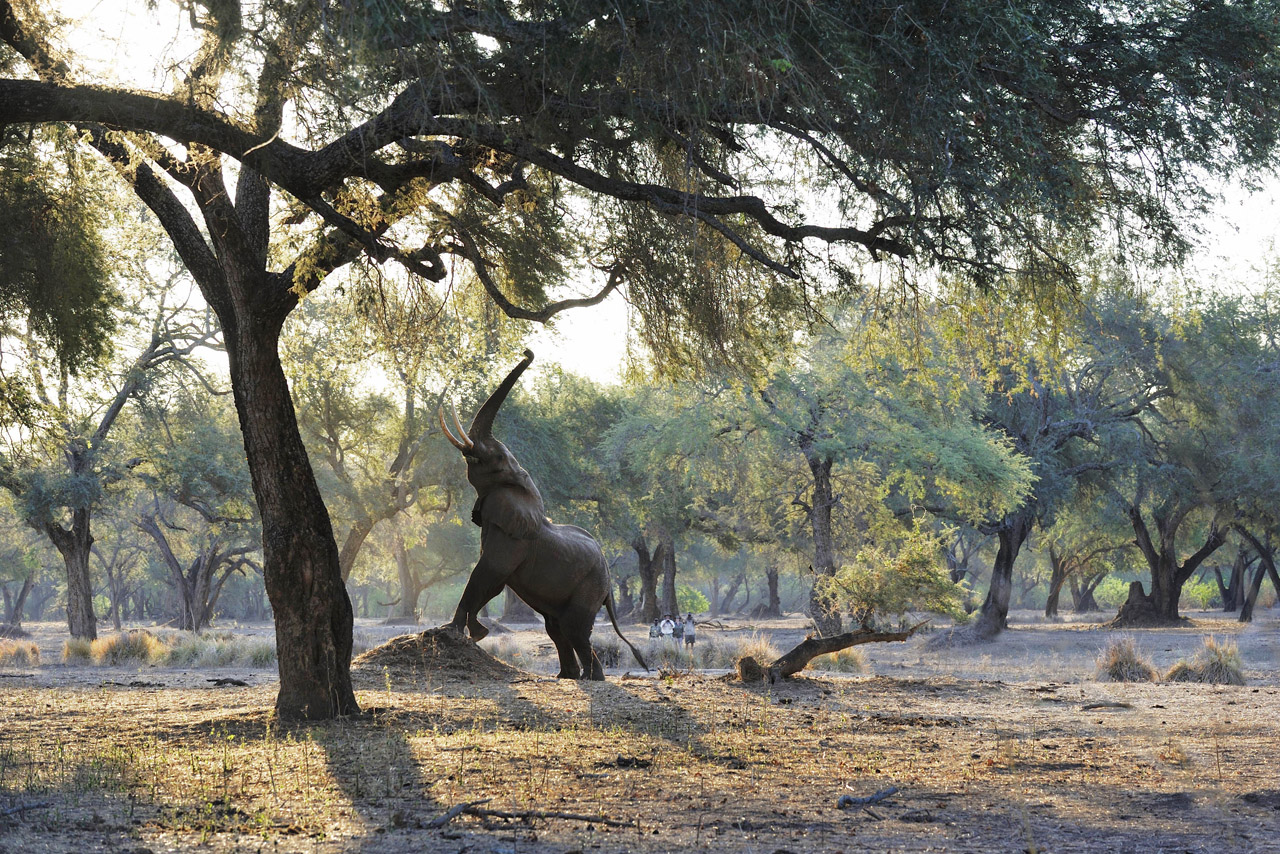

Accommodation
Old Mondoro Camp has withstood the trend for increasingly elegant safari accommodation and is distinguished by its authentic charm and fantastic location. The camp is owned by the same family that owns Chiawa Camp, excellent quality is therefore guaranteed.
Old Mondoro Bush Camp is a traditional bush camp with simple yet very spacious and charming guest tents, which are open on the side facing the river. A western style door leads onto the ground-level veranda, where a small sofa and chairs invite guests to relax and watch the inquisitive elephants that often visit. The tents come with a washbasin and toilet (electricity and warm water are available around the clock); the shower and a unique bathtub are open-air. The tents are open during the day and if requested, the canvas sides are rolled down at night.
Tents 1 faces the Zambezi, tent 2 has views of the Zambezi and the Old Mondoro Lagoon, and tents 3, 4 and 5 face the Old Mondoro Lagoon. In order to protect it from elephants, the main building has been built on a raised platform; meals are usually served here or under the stars. Due to the high number of elephants and buffaloes in camp, guests often need to be driven to their rooms.
Old Mondoro Bush Camp is situated in the eastern part of the Lower Zambezi National Park. The camp is accessed by air from Lusaka (45 mins) to Jeki Airstrip. A 30-minute vehicle transfer takes guests from Jeki Airstrip to the camp, which is located close to the Chakwenga and Zambezi confluence.
The camp is surrounded by enchanting forests and a slightly raised grass plain, which spreads out towards the west before being engulfed by a woodland stretching as far as the distant mountains.
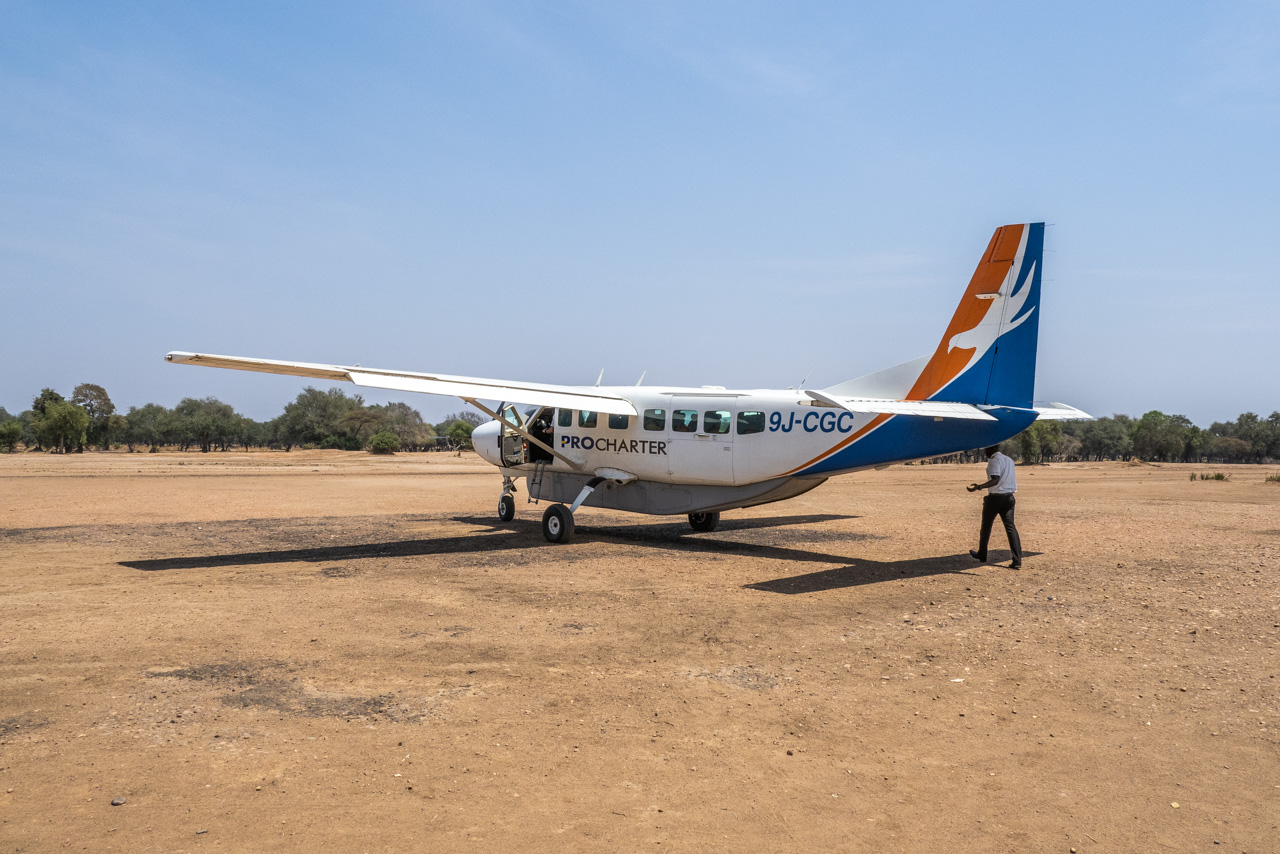
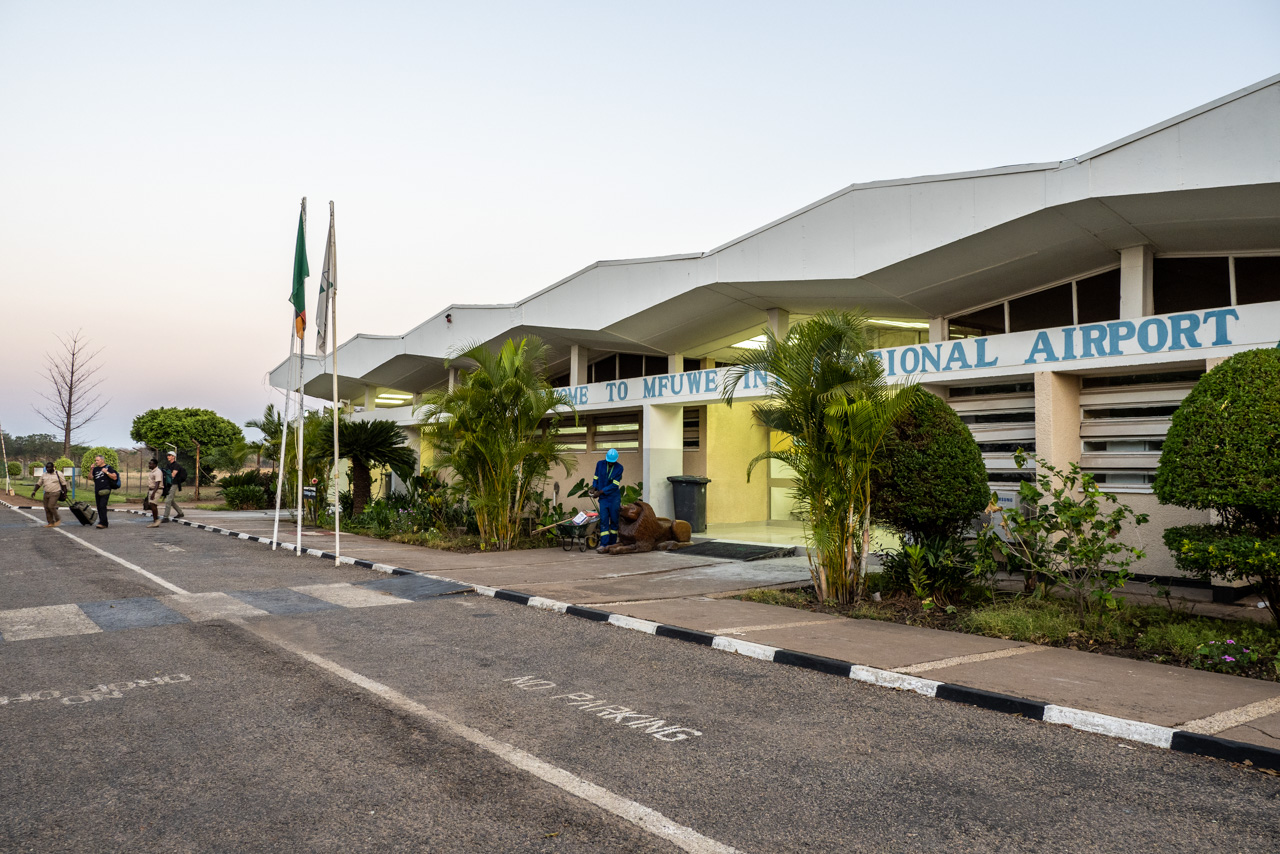
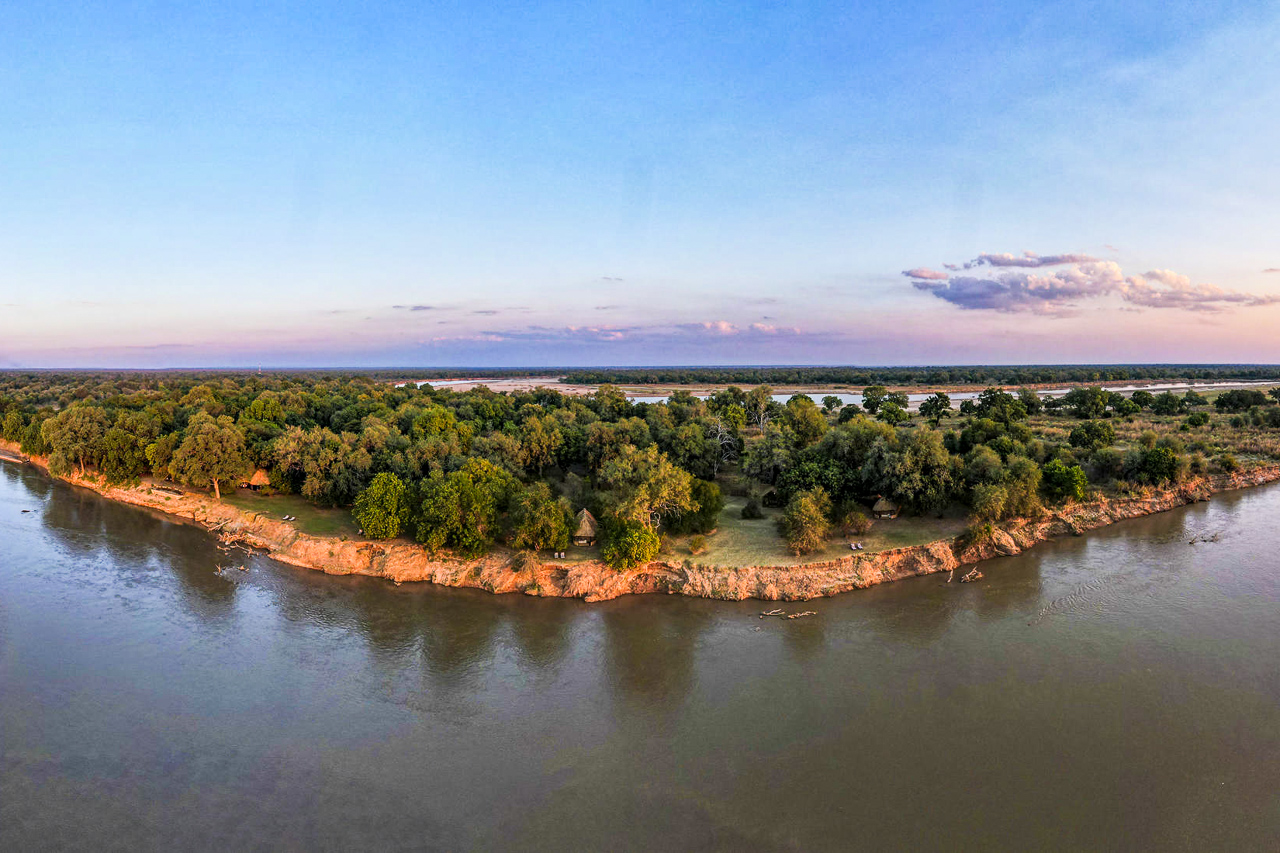
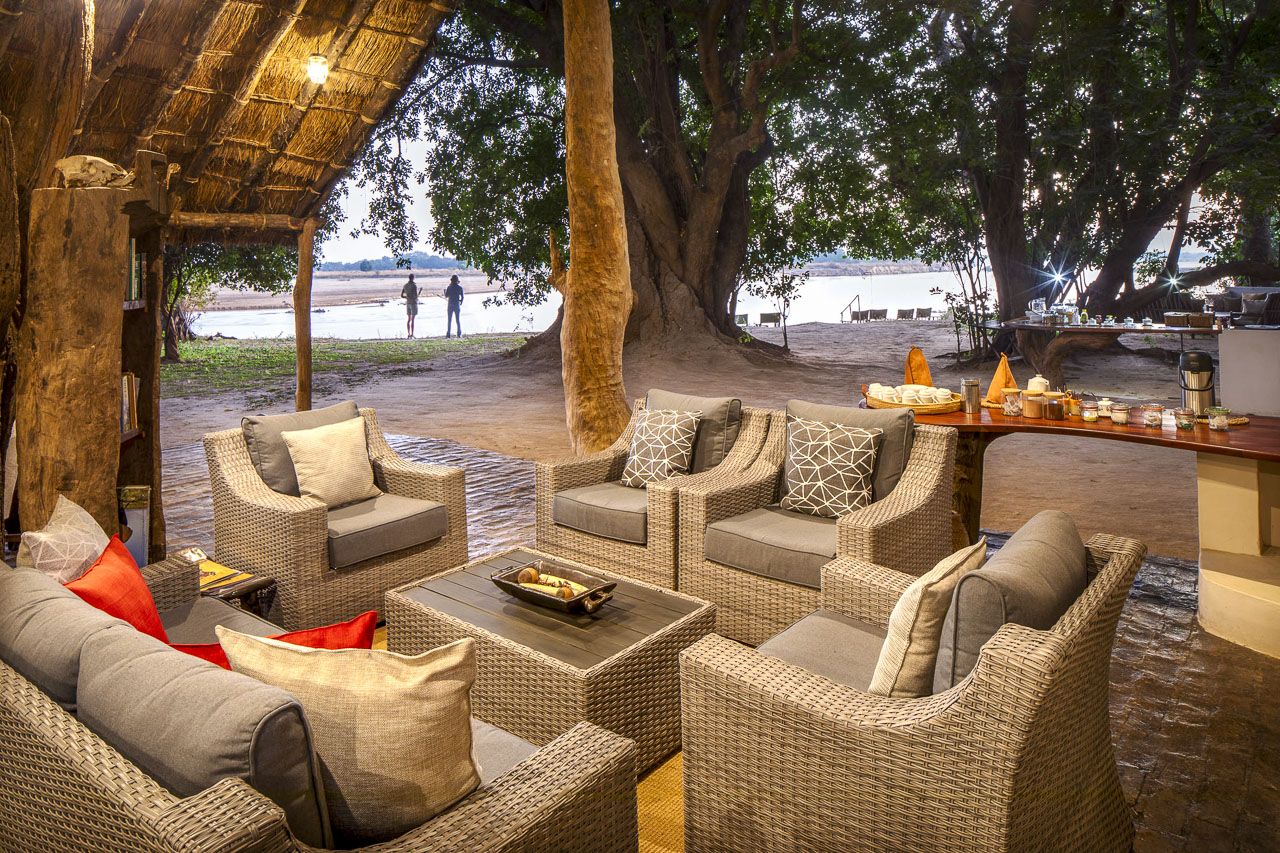
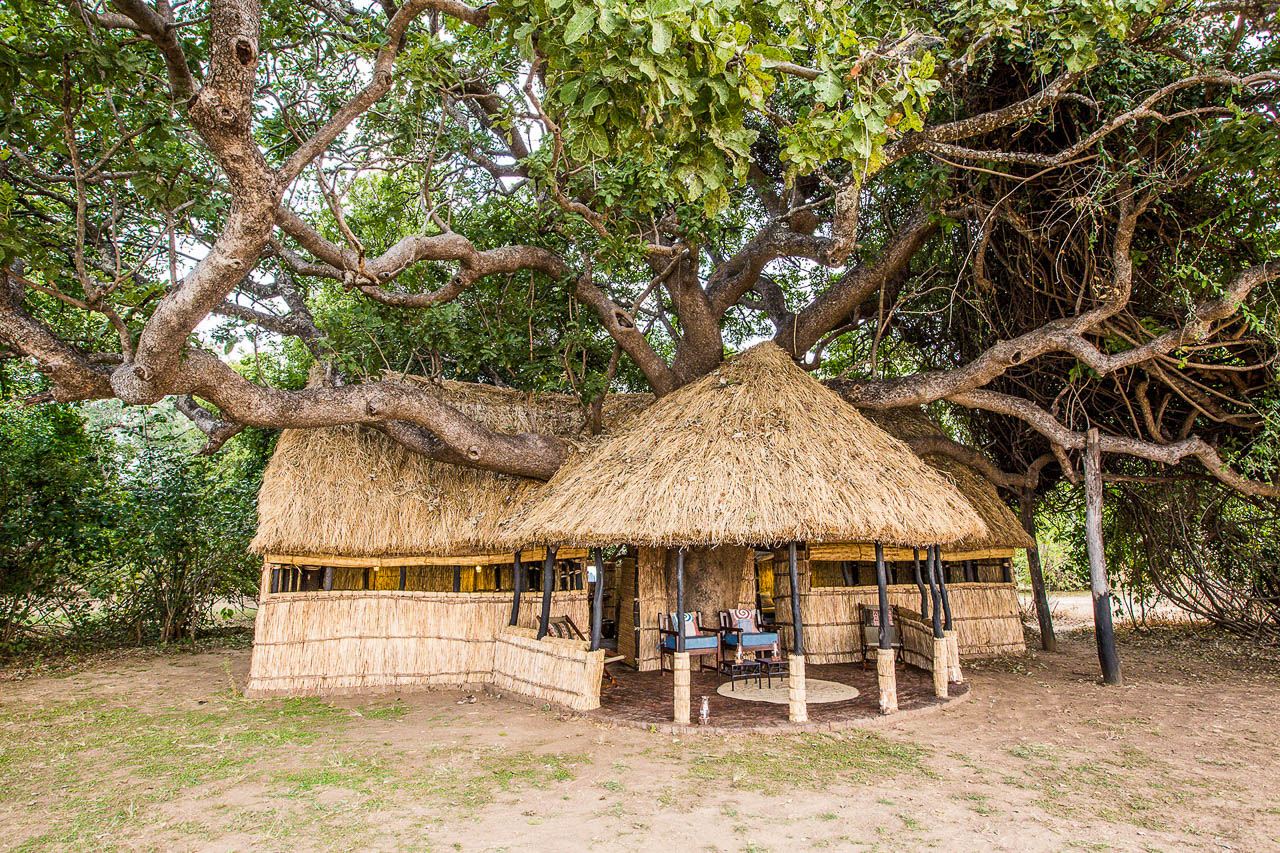
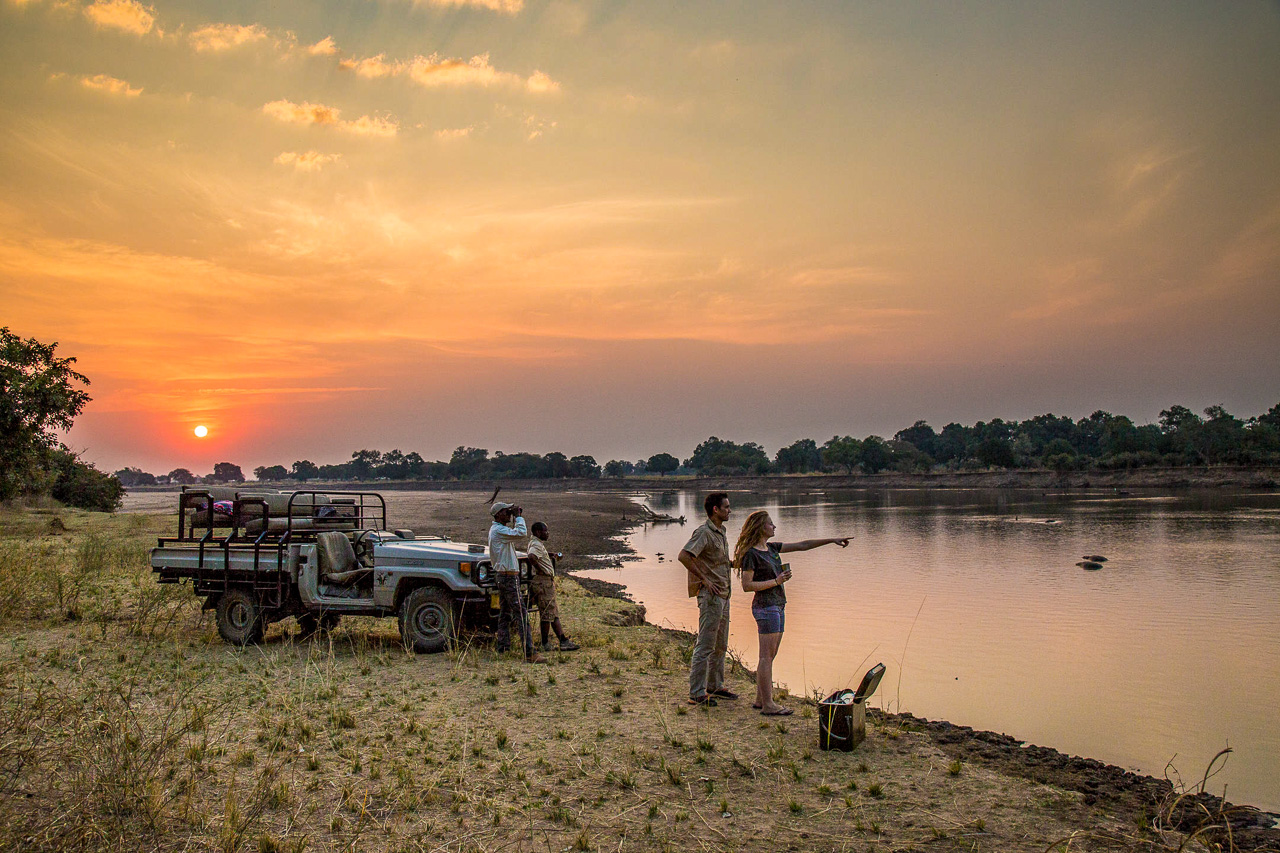
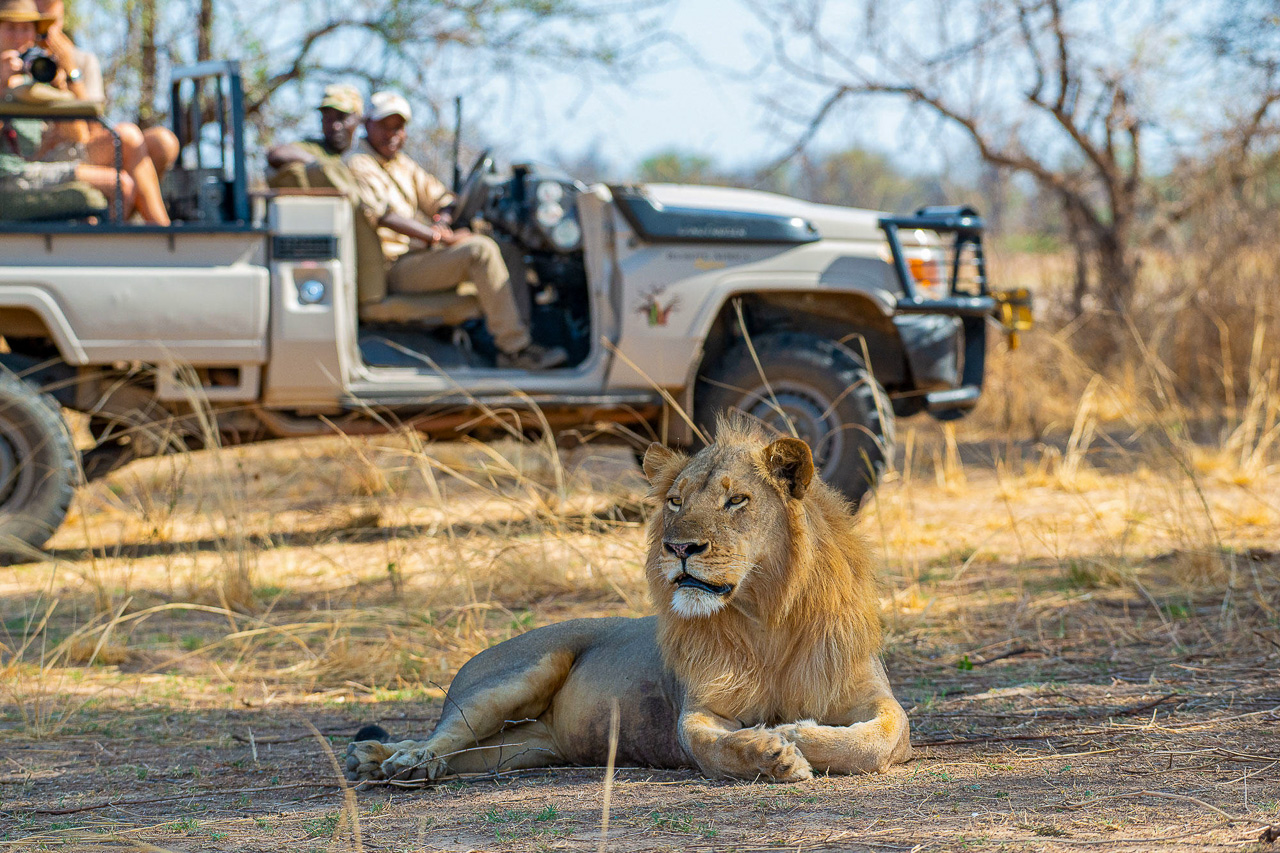
Accommodation
Remote Africa Safaris is one of the last family-run safari operators in South Luangwa. John and Carol Coppinger raised their two children at Tafika Camp and know the park inside out. Their portfolio includes the two Trails Camps, Big Lagoon Camp and Chikoko Tree Camp, and Mwaleshi Camp in North Luangwa National Park.
The owner-run Tafika camp comprises six beautifully appointed traditional reed houses made entirely of natural materials. The rooms are situated on a large meadow on the banks of the Luangwa River and come with en-suite facilities, open-air shower and a small veranda with sofa. Four of the rooms are standard, a further room intended for honeymooners contains a huge double bed; a family room situated on the river's edge at the very front of the camp sleeps four guests (shared bathroom). Several loungers and hammocks scattered around the garden invite guests to lay back and relax.
The main building houses a bar, lounge, computer/charging station and various tables for lunch, which is served at 12:00. Guests dine under the starry sky and both the food and service are excellent. The day begins with a good hearty breakfast, which is usually served at the fire pit down by the river.
The camp can be reached by air from Mfuwe Airstrip to Lukusi Airstrip (15 minutes flight time followed by a 10-minute vehicle transfer), or by vehicle from Mfuwe Airstrip with a transfer time of approximately two hours.
The camp is situated on the banks of the Luangwa River and offers spectacular views of the surrounding area. The water level is very high just after the rainy season and drops again to leave behind large sandbanks.
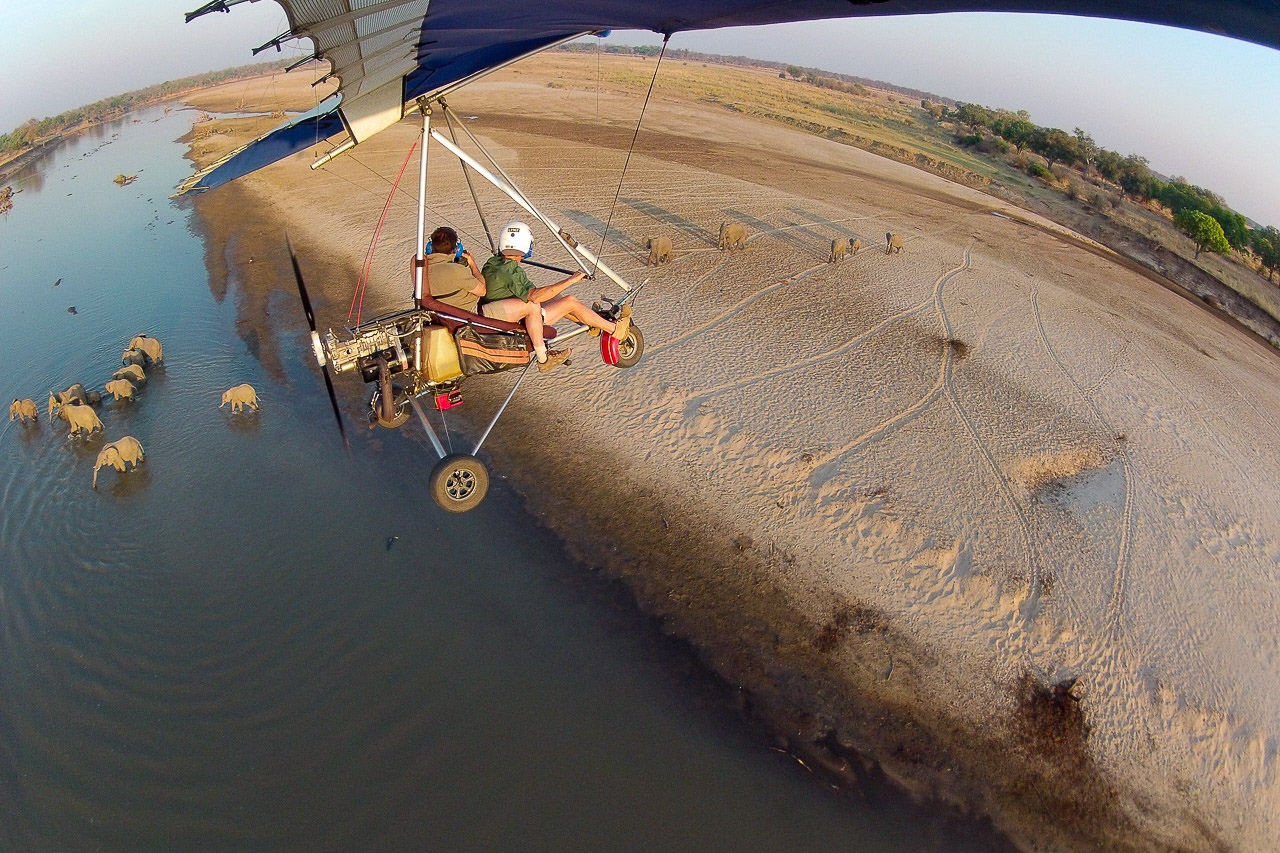
Most camps here are located close to the river, as this is where animals come to quench their thirst during the dry season. The dry season is also when the water level reaches its lowest point, exposing large sandbanks. The residual pools support high concentrations of crocodile and hippo, which tussle for the remaining water. When the wet season arrives in November, the water level rises rapidly, and the Luangwa becomes a raging torrent – it has even been known to take the odd camp with it.
The walking safari is South Luangwa’s speciality, and is available at every camp. At 500 m above sea level, the park is very hot during the summer months. If you’re not a fan of intense heat and don’t like walking safaris, then it’s best to visit earlier.
The Muchinga Escarpment, a natural boundary to the west, prevents the migration of animals. The park is bordered by the river to the east and extends into the Nsefu Sector, which stretches out from the other side of the river.
The park’s entrance gate is located at the town of Mfuwe, which has a small airport (this is where guests are picked up). Many of the less expensive camps are located outside the park, close to the main bridge. In our opinion, the central sector around Mfuwe Lodge suffers a bit from traffic coming in over the bridge. For this reason, we recommend that you avoid the main bridge and visit the southern sector, the northern sector or Nsefu sector to experience quieter safaris.


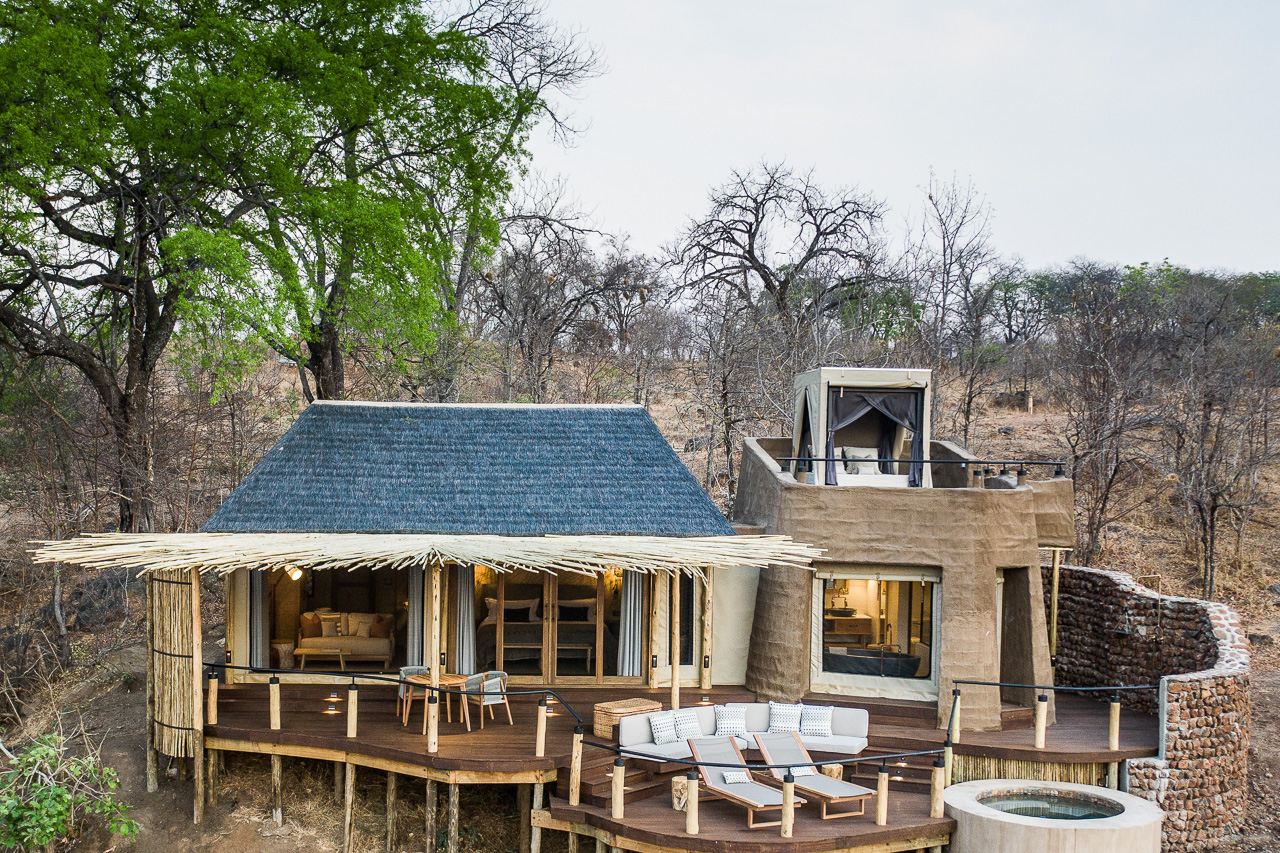
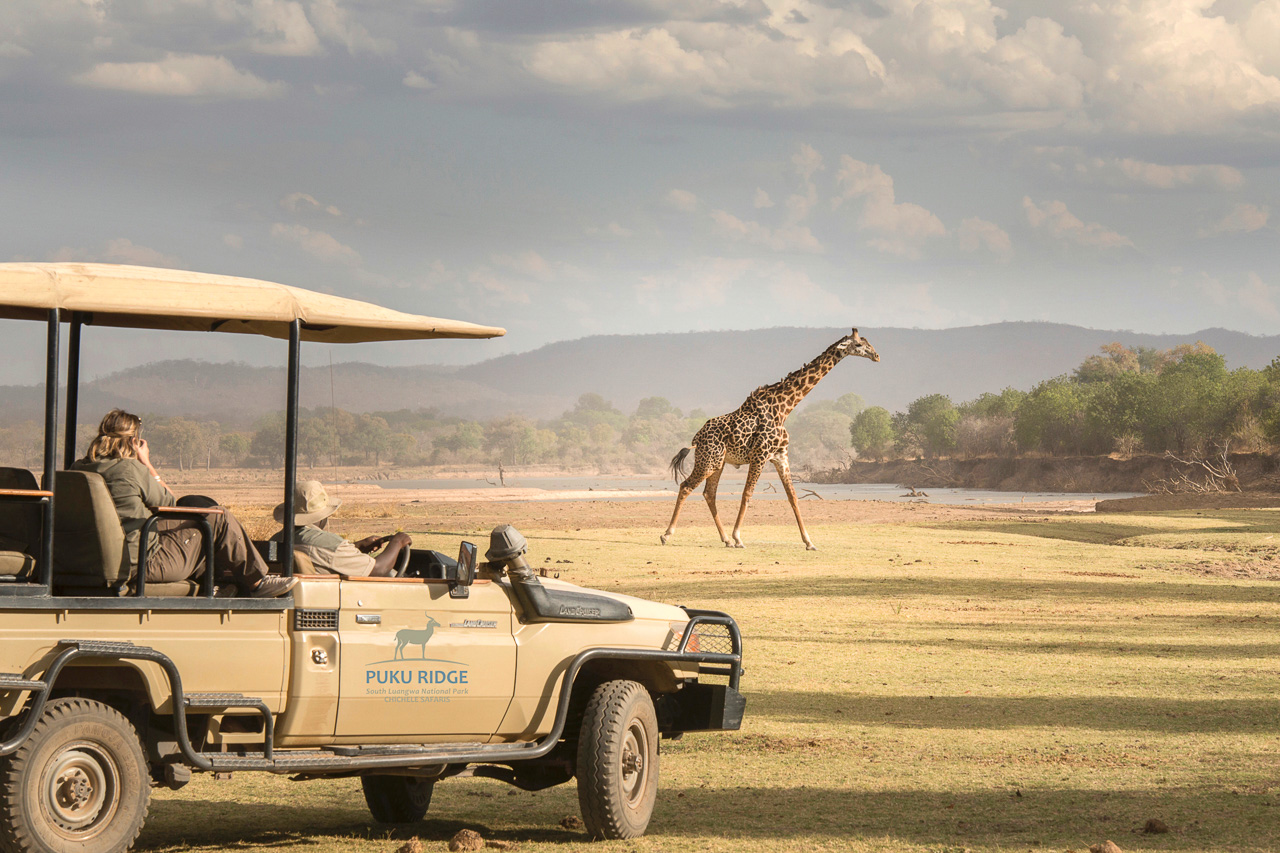
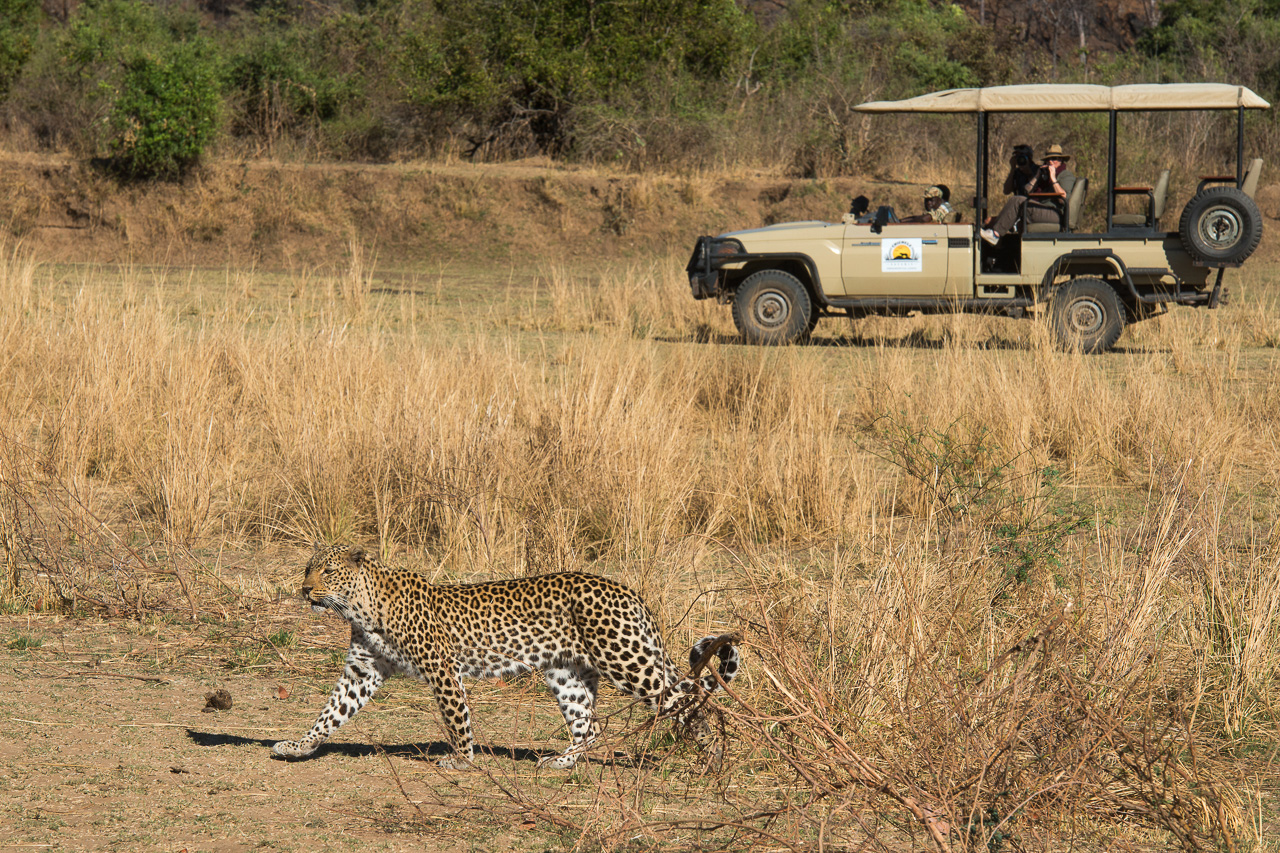
Accommodation
Puku Ridge was completely rebuilt in 2019 and is now run by the Cumings family, who have built up a reputation with their two legendary camps Chiawa and Old Mondoro in Lower Zambezi.
The camp sits at the foot of a hill. Its eight large tents look out over the sweeping Kakumbi Dambo floodplain. The plain to the front of the camp is lit at night by floodlights and guests can watch the wildlife gathering at the small waterhole. The guest tents - raised on stilts - are beautifully furnished in modern, earthy tones and offer everything your heart desires - and even more: a cosy lounge, Wifi, airconditioning, ceiling fans, a large en-suite bathroom with indoor and outdoor shower, a huge bathtub with view and a very spacious multi-level veranda with private plunge pool.
However, the highlight of every room is the tower with the Day/Star Bed, where you can rest during the day and watch out for wildlife on the plains and sleep at night under the endless starry sky.
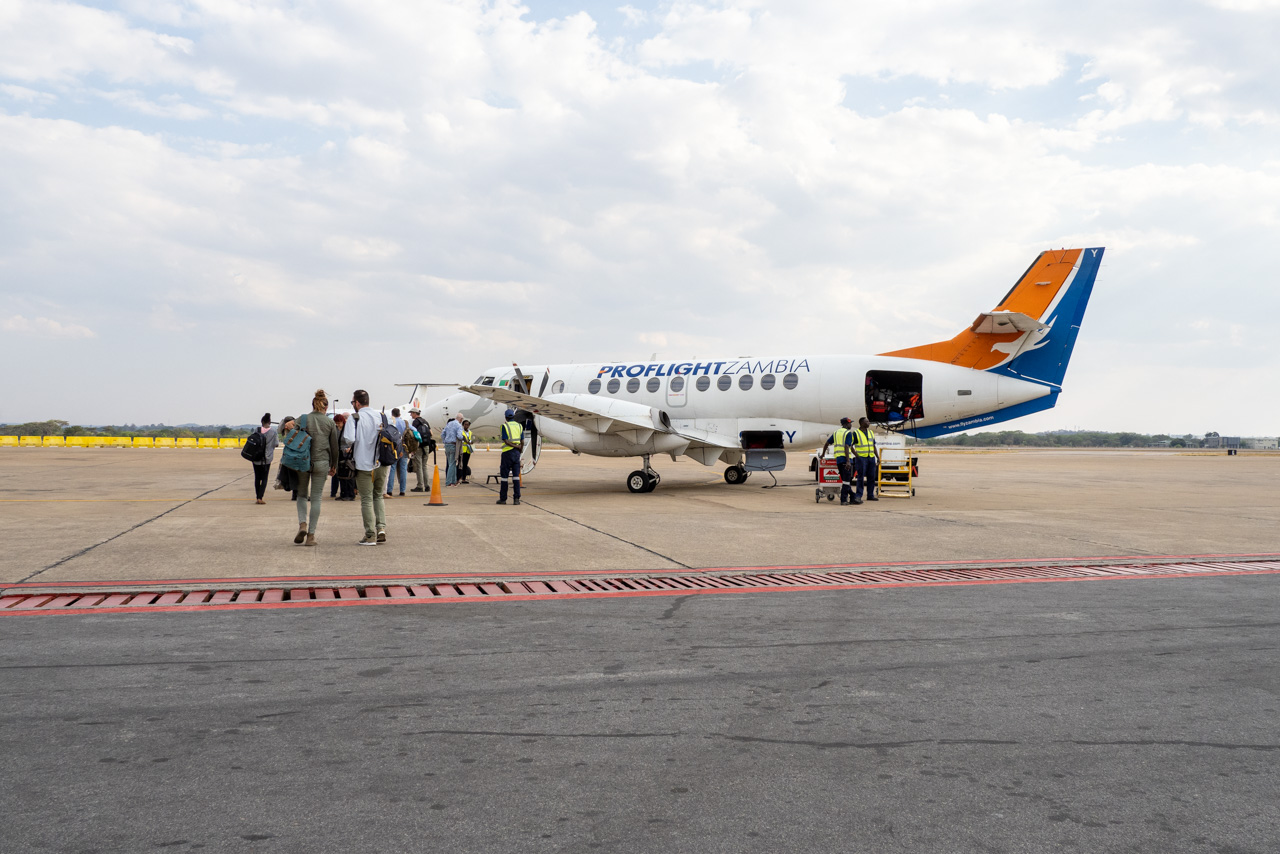
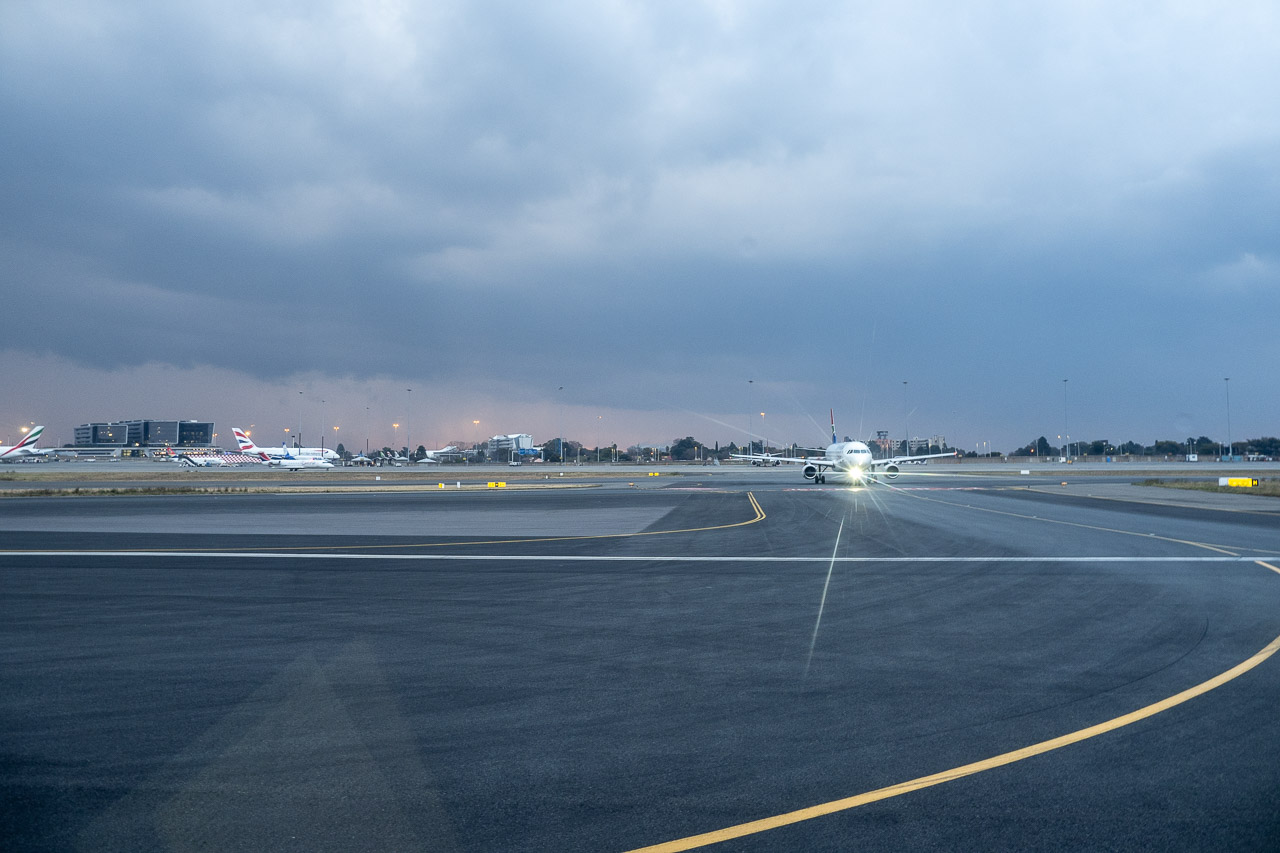
Basic Information
Individual journey. The journey will be planned on your preferred dates.
Duration 14 nights. Min 2 guests. Minimum age 12 years. Weight limit of luggage 20 kg. Luggage in one soft bag only.
Includes all transfers from Livingstone to the hotels/camps to Lusaka
- Toka Leya: Standard Room. All meals, drinks (except premier brands), twice daily scheduled activities with one of the guides. Activities: river cruise, game drive to Mosi-oa-Tunya National Park where rhinos can be found, visit to the Victoria Falls on the Zambian side, visit of a local village.
- Busanga Bush Camp: Standard Room. All meals, drinks (except premier brands), laundry service, twice daily shared activities with one of the camp guides.
- Chiawa Camp: Standard Room. All meals, drinks (except premier brands), laundry service, twice daily shared activities with one of the camp guides.
- Old Mondoro Camp: Standard Room. All meals, drinks (except premier brands), laundry service, twice daily shared activities with one of the camp guides.
- Tafika Camp: Standard Room. All meals, drinks (except premier brands), laundry service, twice daily shared activities with one of the camp guides.
- Puku Ridge: Standard Room. All meals, drinks (except premier brands), laundry service, twice daily shared activities with one of the camp guides.
Learn more about these areas











